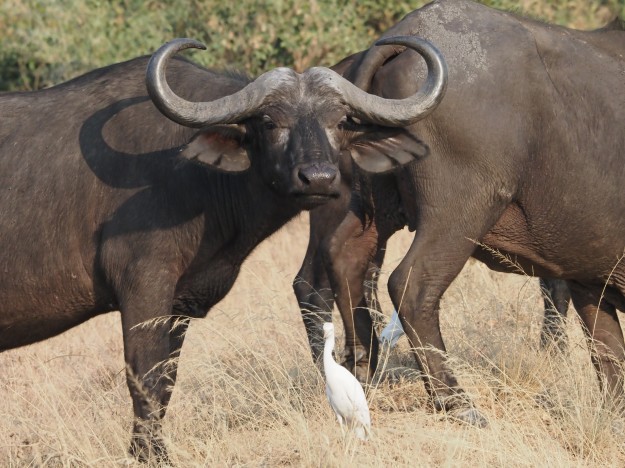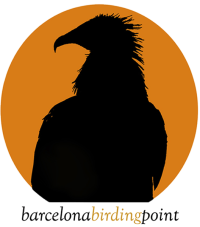Uganda 2022 Trip Report
Dates: From July 15th to 30th, 2022
Number of participants: 3
Number of bird species seen: 454
All images in this trip report by tour leader Carles Oliver and tour participant Mike O’Neill. All rights reserved
Oveview: After a long delay due to the well known global pandemia, we finally went on with our first tour to Uganda. And it was great. Not only due to the well known quality of the birdwatching in the country, but also because of the very rich mammal life living there, the quality of the lodges along the whole trip, the amazing landscapes all along the tour, the charming local people all along, and the very pleasant temperatures, with an average of 23ºC, and many sunny days that were only broken by a pair of showers in the first and the last day of the tour.
This tour was planned for some years, but the pandemia emerged in our lifes, and it had to be cancelled a pair of times. At the end, the many hours of talks with our local partners produced a tour with the perfect tone, focused in the many endemics, but not only, in an effort that at the end crystallized in 454 species of birds and 40 species of mammals! Indeed we not only enjoyed Shoebill Stork once, but three times! All in three different places. It is also to be noted in our list species such as the endemics Rwenzori Nightjar and Grauer’s Warbler as well as the rarely seen Dusky Long-tailed Cuckoo and Yellow-footed Flycather. At the end of the tour we have enjoyed up to 6 African Finfoots! and had remarkable views on Chocolate-backed Kingfishers, Ituri Batis, Papyrus Gonolek, Black Bee-eater, Rwenzori Hill Babbler and Archer’s Robin Chat to name a few along with several African goodies including African Crowned Eagle, Yellow-billed Barbet, Blue Malkoha, Short-tailed Pipit, African Emerald Cuckoo or Dusky Crimsonwing getting in our list.
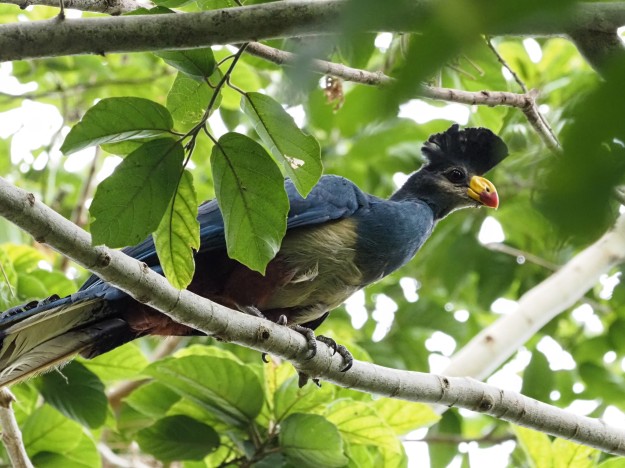

Day 1. Lake Victoria
After an evening flight from Europe, our group landed in Entebbe afer midnight, and in a magical start of the trip, only 10 minutes after leaving the airport we were crossing a small arm of the Lake Victoria in a small boat. It was there, in the calm waters of the lake, enjoying the fresh night with the ecos of the firsts Ugandans going to work arriving from the city, that we had the first unforgettable footprint of Uganda in our travel book!
In a few minutes we arrived to our accommodation at the opposite shore, where we enjoyed a well deserved rest before going out for breakfast.
Our first birding of the tour was in the gardens of the accommodation, where we had good views on several species including the firsts of many Pied Kingfisher, Village Weaver, Red-chested Sunbird, Broad-billed Roller and Yellow-billed Stork. Here we also had a selection of Weavers including Slender-billed, Golden-backed and Yellow-baked. Long-crested Eagle was hunting in the hotel grounds, and Black-and-White Shrike Flycather and Lesser Honeyguide were seen around the cottages. The area around the lodge is basically a farming area, but there are still interesting remants of the original forest, so we were not surprised when a gorgeous, enormous Great Blue Turaco appeared right in front our eyes to give us one of the first unforgettable momments of the trip.
From this lodge we headed to marshes around the Victoria Lake. The area opposed to Entebbe is still preserving a large complex of swamps and wetlands, and right after arriving we were enjoying not only common birds such as African Pied Wagtail but also Swamp Flycatcher, Widding Cisticola, Brown-headed Batis and the always breath-taking African Blue Flycatcher. Once in our boat, we started moving the swamp, and soon Squacco and Purple Herons flew from both sides of the channels, rich in lotus and other floating plants. Widding Cisticolas were singing everywhere, and were soon joined by Marsh Black Widowbirds. A White-faced Whistling Duck showed really well while a flock of White-winged Black Terns was a nice adding. Back to the swamps, Long-toed Lapwings were feeding in the marshes, some pairs already with chicks around, and Malachite Kingfishers were a common view along the channels.
A Little Egret caught our attention for a few seconds, but we soon forgot about as a massive figure was revealed about 30 metres away from us. A grey-blueyish, statue-like massive bird with penetrating eyes made us forget about the world. A Shoebill Stork. No movements. No calls. Just the iconical, imposing figure with its massive, prehistorical-like bill. We enjoyed of this incredible bird for about 20 minutes, and during all this time the bird moved only a pair of steps.

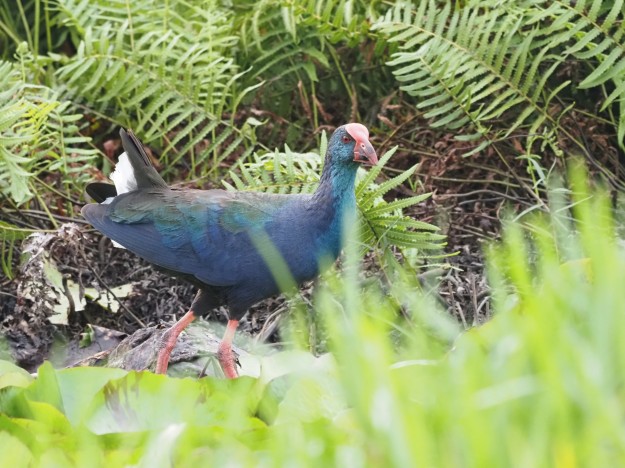
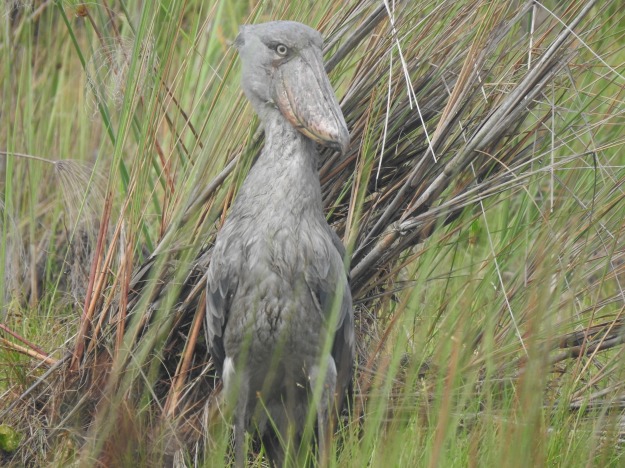
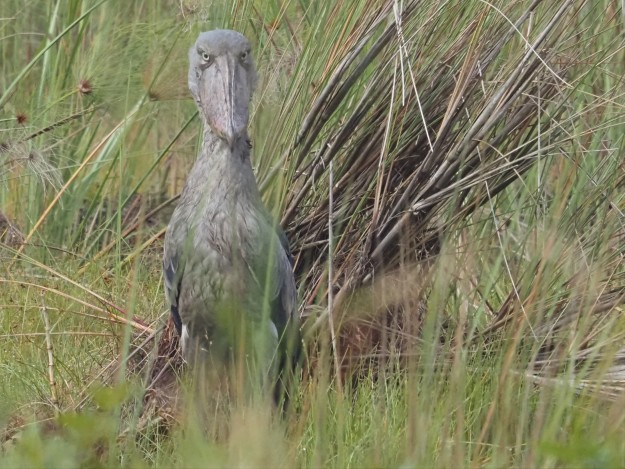
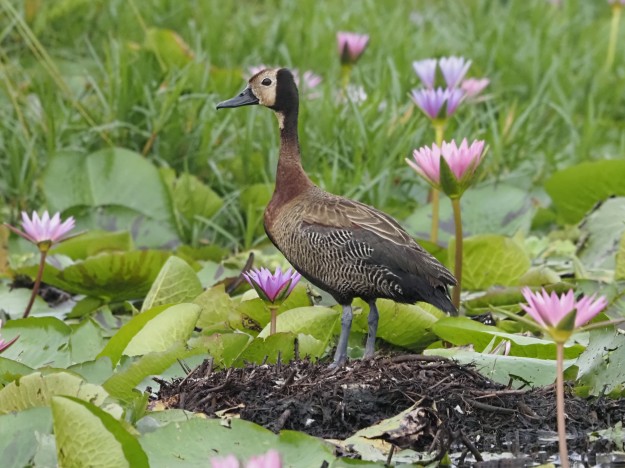
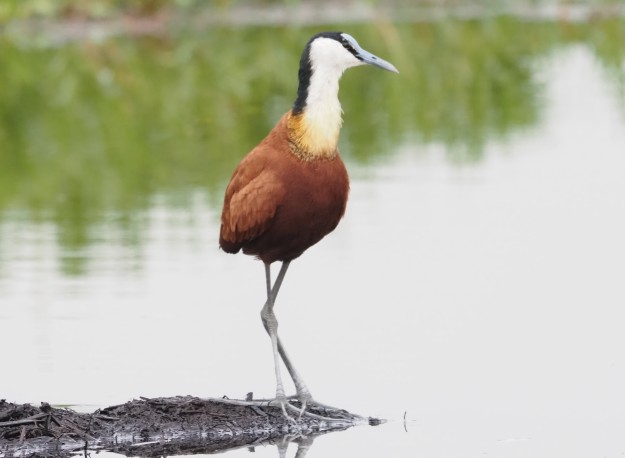
We still had some time more in the swamps, and we enjoyed the very common African Jacanas, the flight of some African Marsh Harriers, the delicate dance of the Northern Brown-throated Weavers on the lotuses and the rather unexpected view of 3 Plain Martins passing over our little boat.
From here we went to a nearby restaurant for lunch and rest. After lunch we transfer North of Kampala, moving the Rhino Sanctuary, where we had a first contact with many of the birds leaving in the woodlands. Our arrival to this Sanctuary, devoted to protect an increase the thin population of this giant in Uganda, was precided by a strong storm. Once the rain passed away, we were scorted by a ranger to track some White Rhinos, and soon after we were enjoying of impressive views on 4 individuals feeding on the refreshing grass, and interacting nicely. At the same time that enjoying the Rhinos, we could move a bit in the bushland, and some birds were noted: Saddle-billed Stork, Hadada Ibis, Vinaceous Dove, Black-headed Gonolek, Grey Woodpecker, Northern Black Flycather and Bronze Mannikin were all noted. The short walk around produced also a Short-tailed Pipit, a really scarce species in the area, and a gorgeous White-headed Turaco that was feeding in the trees around. From here we just headed to our accommodation for a good dinner and rest.

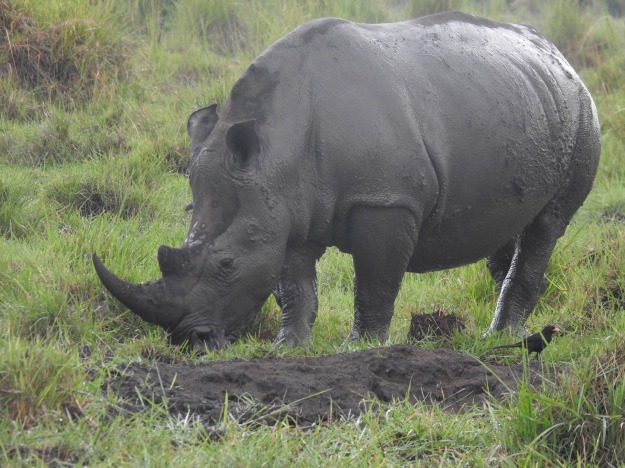
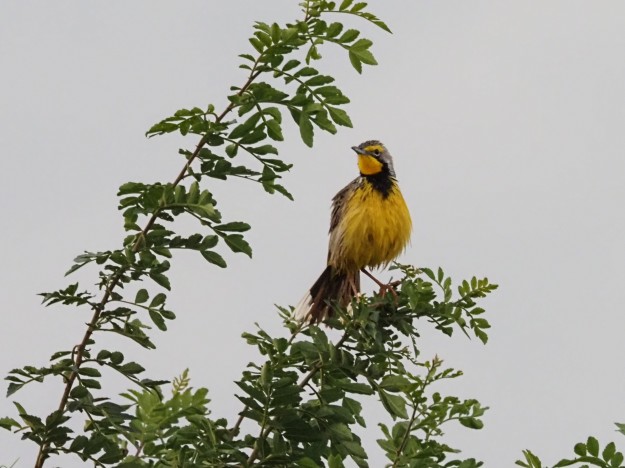
Day 2. Royal Mile – Murchinson Falls
After the rains during the previous evening, our day started with a fresh and clean atmosphere. This day was devoted to explore the famous Royal Mile, a wonderful track crossing a one of the largest areas of lowland primary forest in Uganda. Here, we explored both open lands and the forest, and in our first stop of the morning we had already a massive number of birds. Here, exploring a gentle slope mixing moisty grasslands and crops, we had a really nice collection of birds living in this habitat including Marsh Tchagra, African Moustached Warbler, Red-faced Cisticola, Fawny-coloured Waxbill, Dusky Twinspot, Lizzard Buzzard, Vielliot’s Black & Baglafecht Weavers to name some of them. Here we also got first views on other common species to appear several times later in the trip such Senegal Coucal, Copper Sunbird and Brown Babbler.
Once in the forest, the firsts of many Saw-wings & White-rumped Swifts of the trip were a wonderful setting for a flock of Black-and-white Casquet & White-thighed Hornbills, the last being a speciality of the Royal Mile, and having a really limited range within Uganda. While enjoying these incredible Hornbills and going throught the differences we got an African Grey Parrot flying above us at low range, providing with excellent views. From here we started our short-walk in the Royal Mile, and we didn’t have to wait long for the first African Pygmy Kingfisher to appear nicely. Chestnut-capped Flycatchers looked like very common that day, and in our first hour within the forest we got a wonderful list of birds that included good looks at Yellow-throated Tinkenbird, Western Black-headed Oriole, the rather scarce Honeyguide Greenbul, along with Tambourine Dove, Red-chested Cuckoo, Blue-throated Roller, White-breasted Nigrita, Lemon-bellied Crombec, Yellow-crested Woodpecker, the always interesting Green Hylia and African Shrike Flycather. Greenbuls were really well represented as got Little, Little Grey and Slender-billed Greenbuls.
But the Royale Mile is famous because of the number species living here which are difficult to find anywhere else. The Ituri Batis is one of them, and we had to chances to follow the nervous movements of a pair up in the canopies. African Dwarf Kingfisher was reluctant to show but by the end of the morning we tresoured excellent looks at them. A pair of Gree-backed Twinspots provided also great looks moving in tall grassland of some clearings. Blue-breasted Kingfisher, often shy in Uganda, showed really well, and Forest Flycatcher, Rufous-crowed Eremomela, Narina Trogon, Buff-breasted Apalis and Little Green & Green Sunbirds were also added to the tour list.
Further on in the forest, a visit to a clearing allowed us to get good views on both Sabine’s and Cassin’s Spinetails, both with a very limited range. When coming back to our van, another stop was mandatory as Dusky Long-tailed Cuckoo was calling in the forest. After a long waiting, we finally got some views on the bird as it crossed to track, and the sight had a warm welcome in the group as this is exremely shy bird that normally is reluctant to show out. Already close to our vehicle, a wonderful Chocolate-backed Kingsfisher was our very last discovery in the forest, giving a wonderful end an excellent morning.
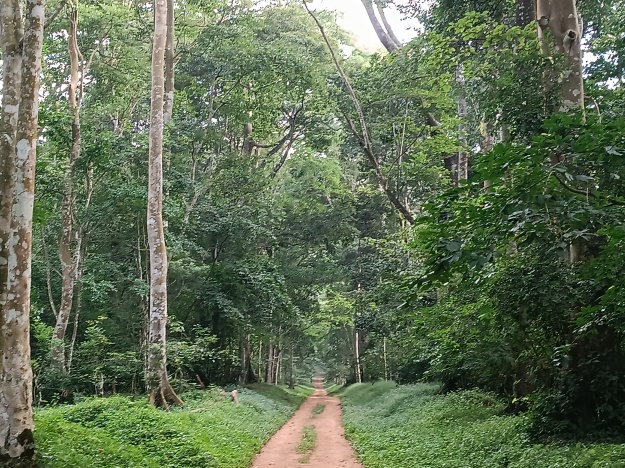
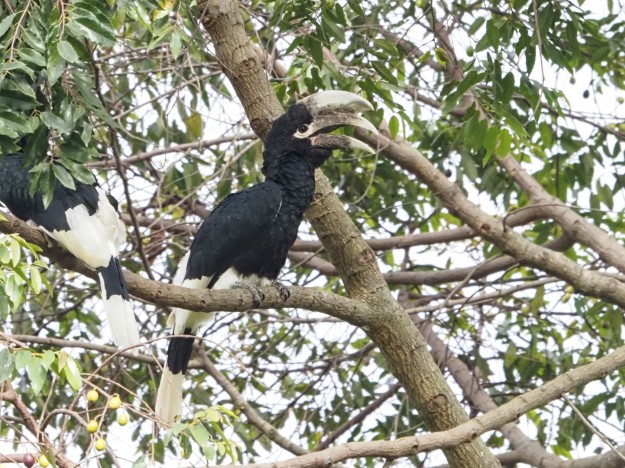

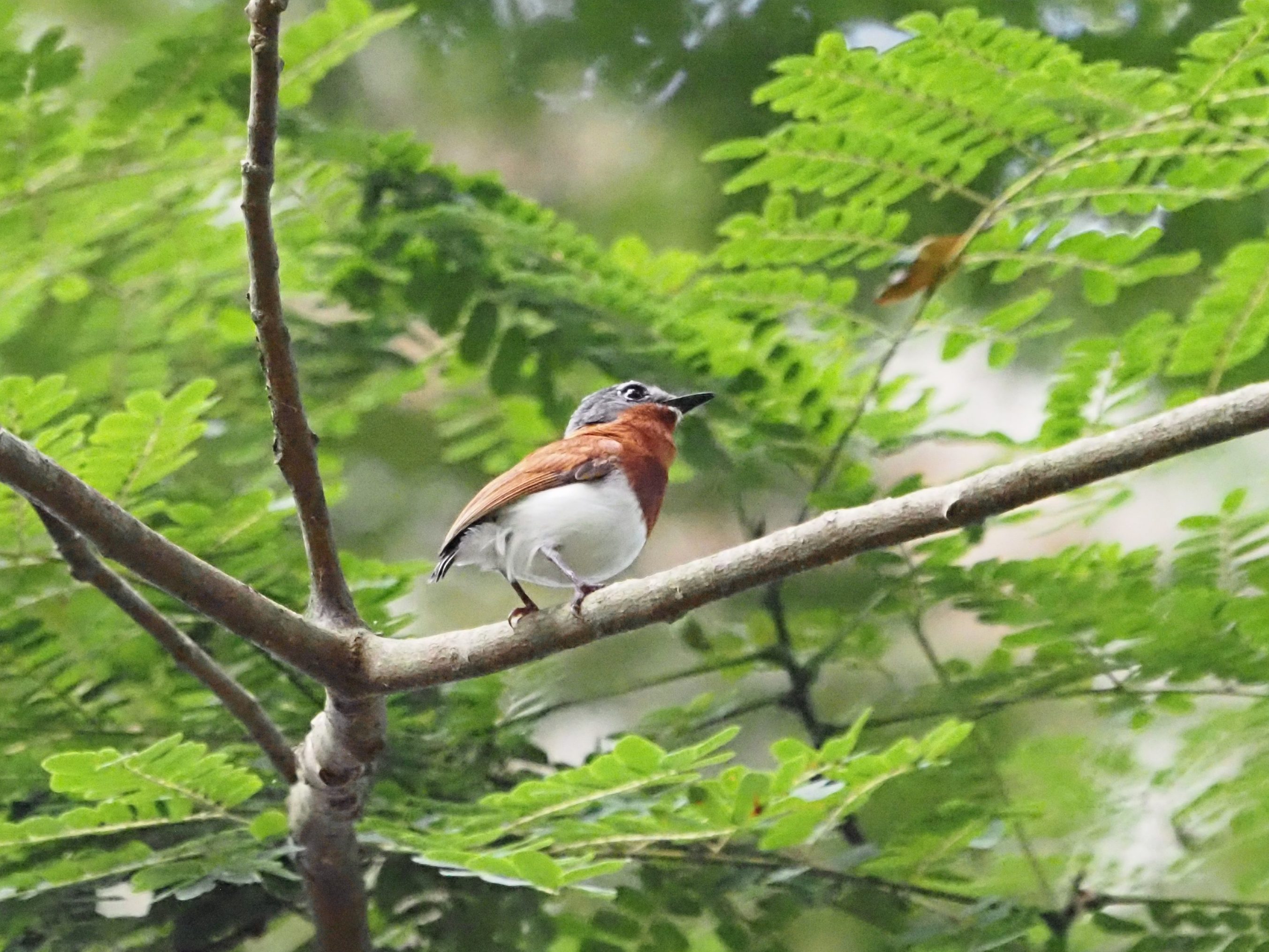

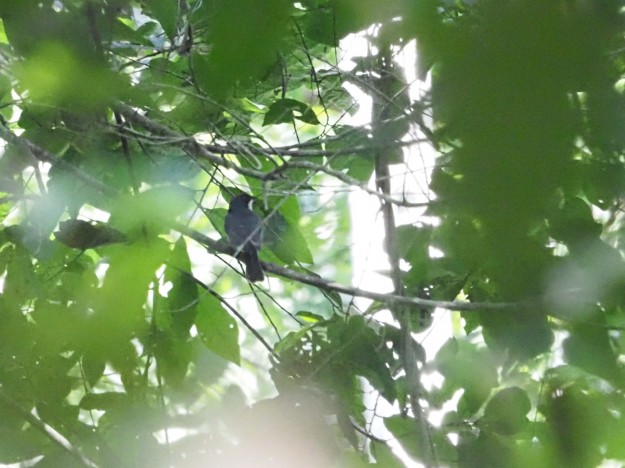
Leaving behind the Royal Mile in our way to the Murchinson Falls National Park we still had a last stop in the primary forest, and we were lucky enough to enjoy a Forest Robin moving in the undergrowth. Scanning the sky, a massive, bulky African Crowned Eagle showed up in the sky, in a magnificent aerial display that let us enjoy many of its wing markings. Extremely happy after this great morning, we definately started our transfer to the Murchinson Falls National Park.
One in the park, birds were momentanely eclipsed by a wonderful array of game moving around us. Not the Mosque Swallows, neither the Pink-backed Pelicans nor White-headed Saw-wing could compete with the herds of Uganda Kobs and the lovely Oribis while family groups of African Elephants fed along the tracks a few feet away from our vehicles. Cape Buffalos appeared to a bit more scarce, but the magnificent silhouettes of the first Giraffes emerging in the sunset light with a chorus of Black-headed Gonoleks and Black-crowned Tchagras is something that will remain in our memories for long!

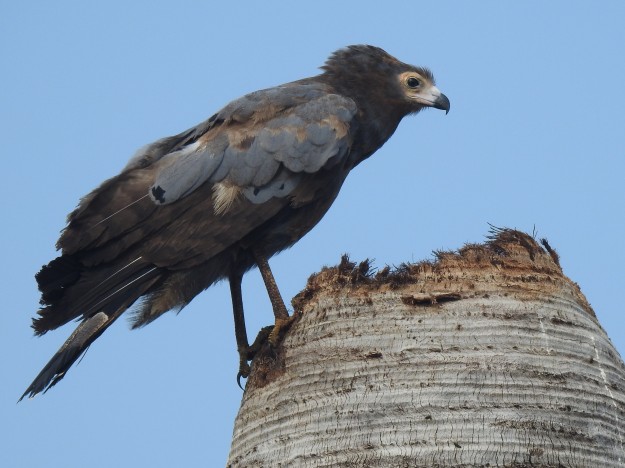
Day 3 – Murchinson Falls game drive & Rock Pratincoles
During the morning we enjoyed a mixed of game and birding drive in the Murchinson Falls National Park. Here we enjoyed a good variety of birds including the firsts Martial Eagles of the trip along with Rüppell’s Vultures, Black-winged Kites, Short-winged & Zitting Cisticolas, Speckled-fronted Weavers, Black-bellied Bustards, Spotted Palm Thrush, Crowned Lapwings and Black-rumped Waxbills. Here we also got the only 3 Brown-chested Lapwings of the trip, a very scarce species that many trips fail to find!
Endless herds of Uganda Kobs were covering the plains along with small packs of the very handsome Oribis. The slender silouhette of the Giraffes were also a common view in the park, and small herds of them were crossing here and there, sometimes not far from the much less common Hartebeest. It did’nt take us long before we located the first pack of Lions lying on the shade of the bushland. Two individuals, one of them a male, were out of the bushes and resting in the dry grass, providing a much better view.
Far away from this plain, we had a very short walk in an open bushland to cath up with some birds, and here we enjoyed Nubian Woodpecker, Red-chested Bee-eaters, Mariqua Sunbird and Spot-flanked Barbets. In our way back to the accommodation, we still enjoyed wonderful views on a flock of Banded Martins that soon were eclypsed by a flock of Northern Carmine Bee-eaters that delighted our group with extremelly close views!

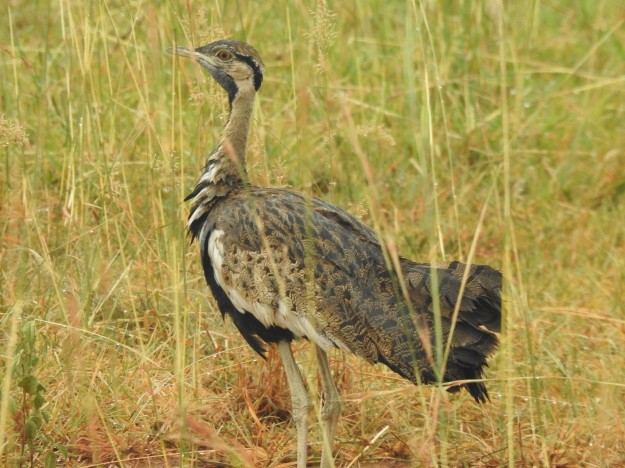
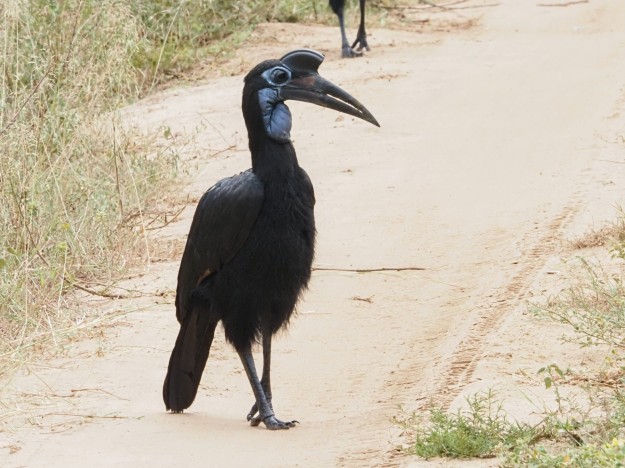

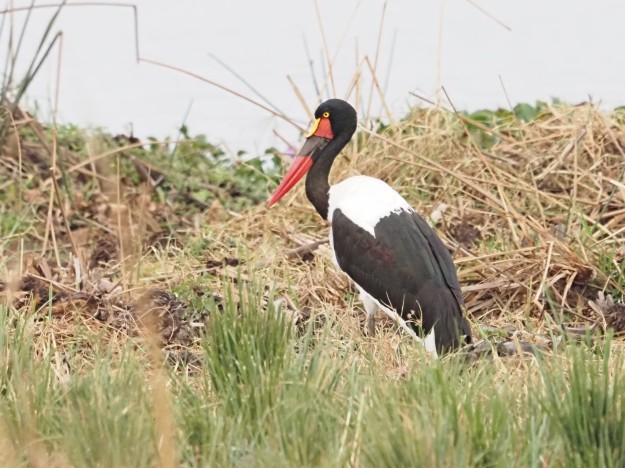
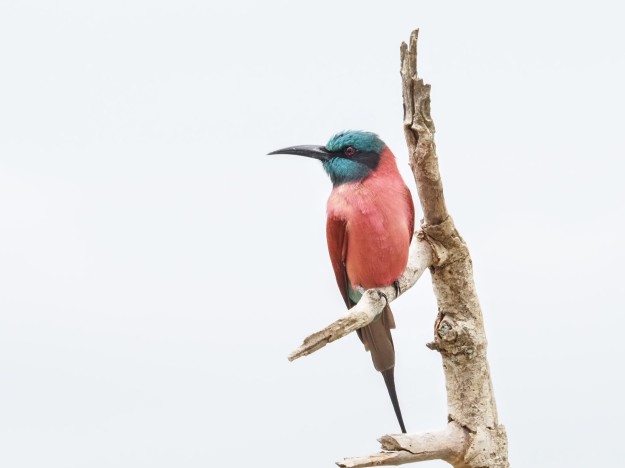
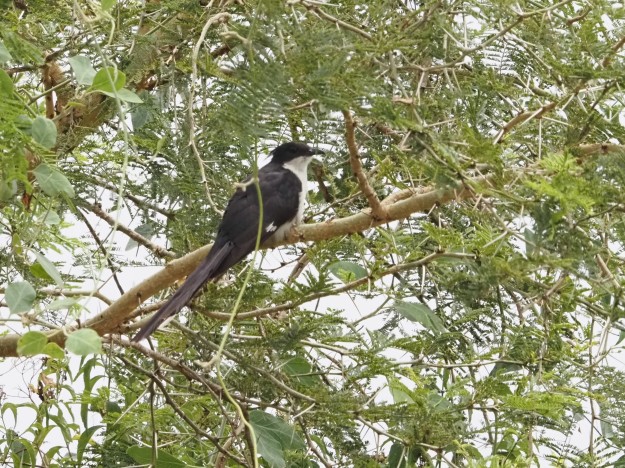
After a nice lunch and some rest we went for more birding in the afternoon. Exploring some corners we enjoyed with good views on Red-shouldered Cuckoo-shrike, Brown Babblers, Yellow-throated Greenbuls but also Black-billed Wood-Dove and Jacobin Cuckoo. Later in the afternoon we visited the impressive waterfalls kwon as Murchinson Falls. Here, the White Nile jumps down a rocky scarpment in their way to South Sudan, and this incredible natural spectacle is even improved with the wonderful flights of the Rock Pratincoles living here. Yes, not far from the waterfalls we enjoyed several of this little jewels while busy trying to catch insects in flight over the waves of the Nile!
After enjoying this incredible site, we walked back to the van, having a Brown-headed Batis in our way back. This is again a quite scarce species, and the only one of the trip! Back to the woodlands, we tried to have some more birding, but we only got nice views on some Red-breasted Bee-eaters before a massive storm came to our way. After some driving trying to scape the rain, we finally decided to go back to our lodge for an early dinner.
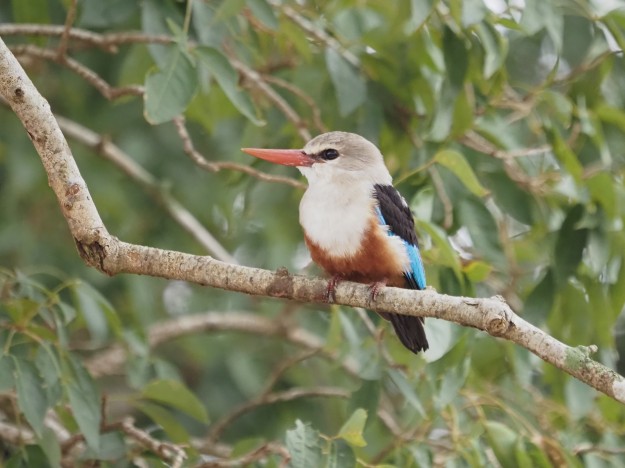
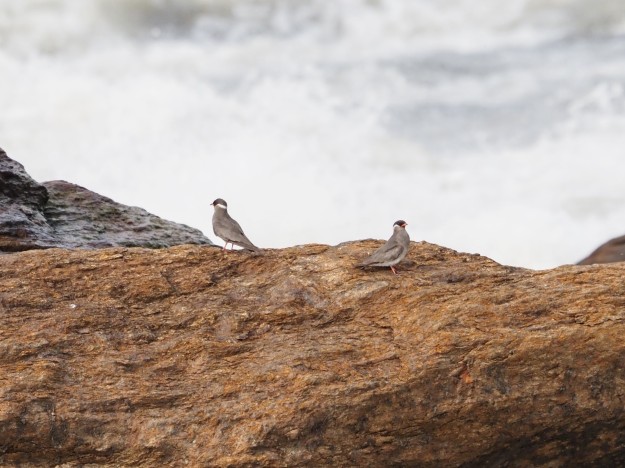
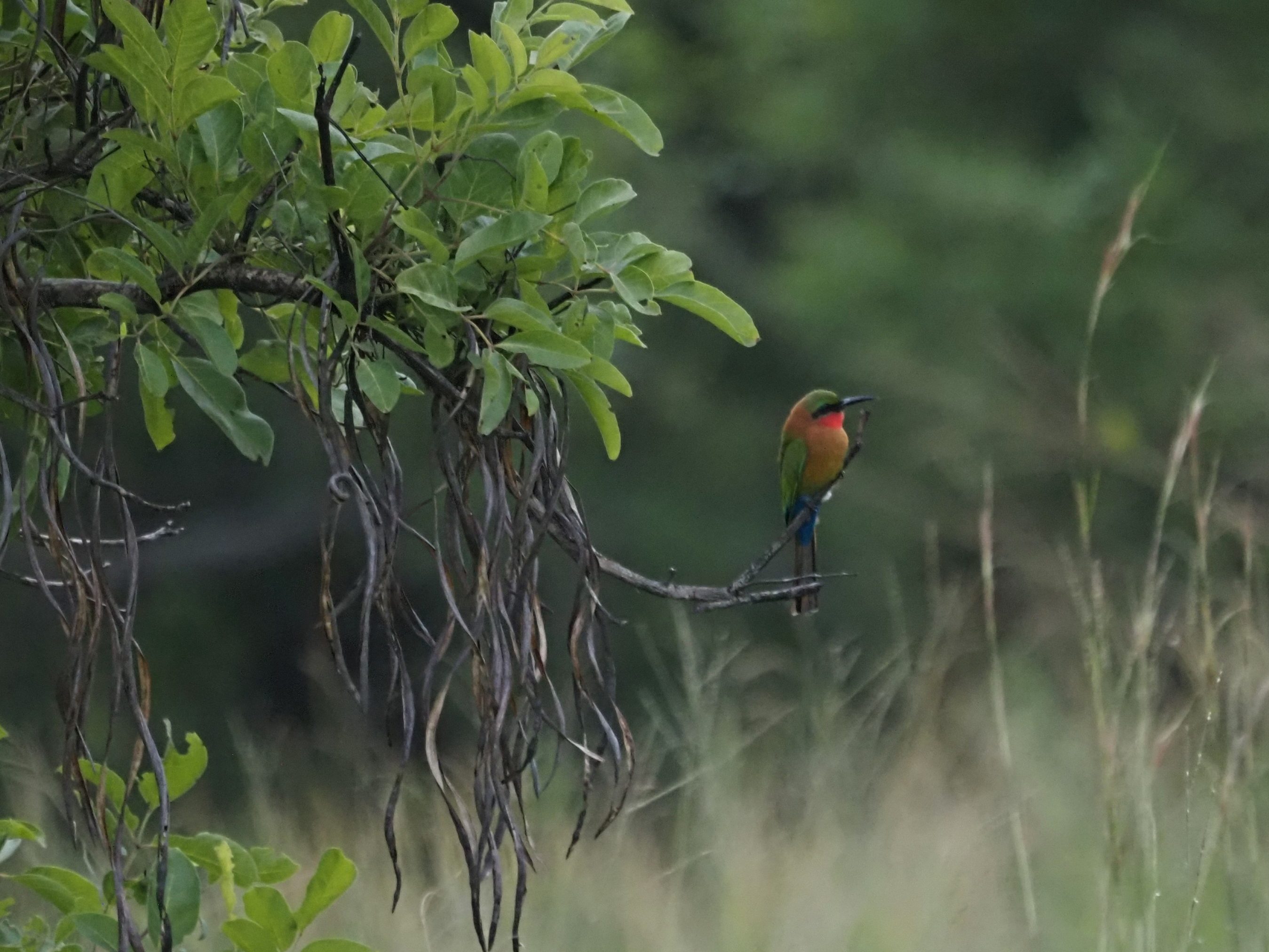
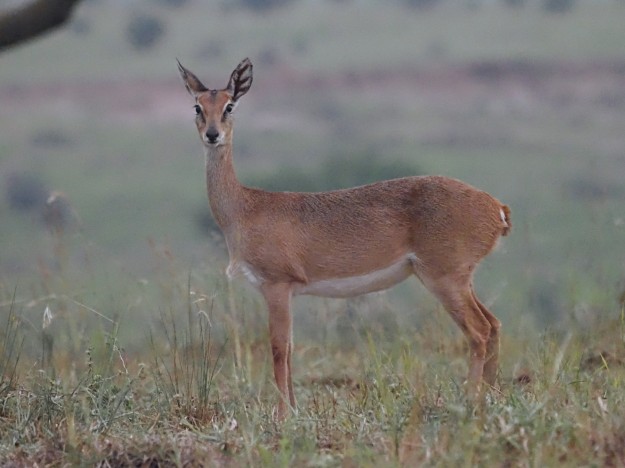
Day 4. Murchinson Fall – Kibale National Park
Morning birding in the Murchinson Falls National Park is always a wonderful experience. A short drive from our accommodation produced not only lovely views on the only Woolly-necked Stork of the trip but also Heuglin’s Francolin, African Wattled Lapwings, lovely views on Foxy Cisticolas, a lovely flock of Red-winged Grey Warblers, Lesser Striped & Wire-tailed Swallows while flocks of Violet-backed Starlings were moving all around.
Further on but still inside the National Park, we could enjoy a flock of the rather scarce White-crested Helmeted-Shrikes, and while tracking them in the woodlands, and wonderful Pennant-winged Nightjar simply appeared from under our feet to stop in a branch 60 metres away from us. Everybody in the group enjoyed great scope views on this amazing bird and took several images before ending our stay in the park with a family flock of Buff-bellied Warblers, great views on Northern Chanting Goshawk, several Red-headed Weavers and the first Barn Swallow of the trip.
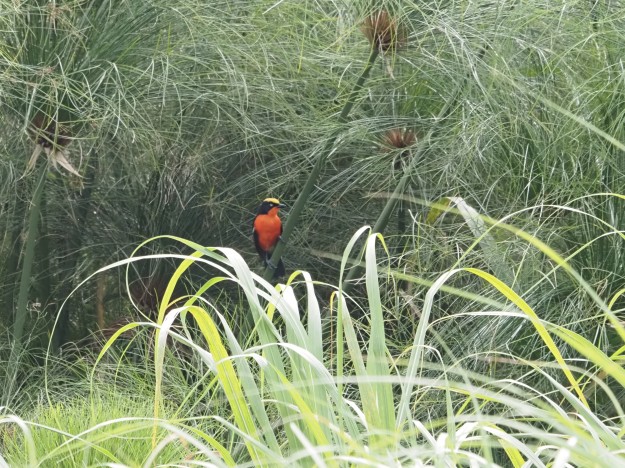


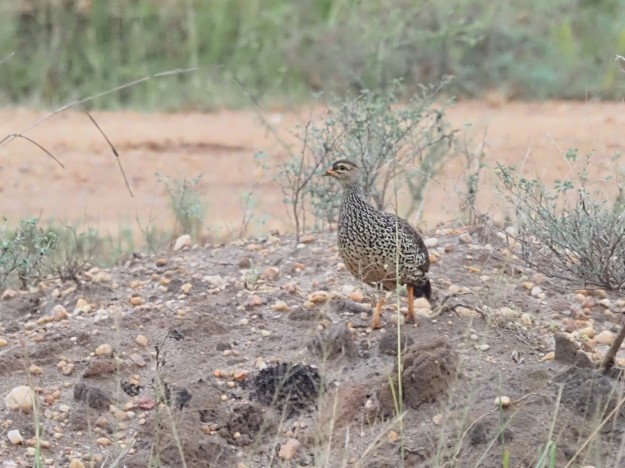
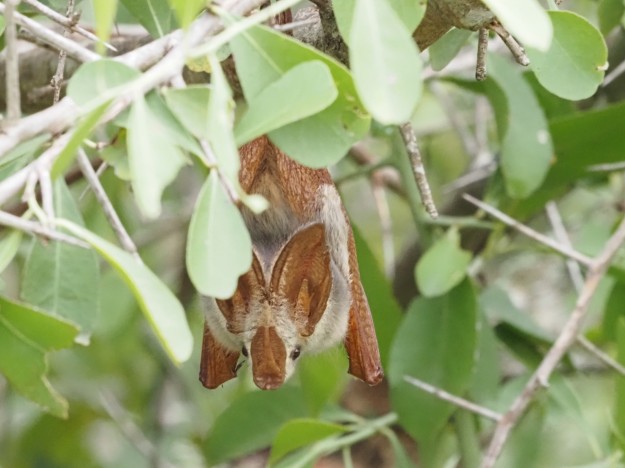
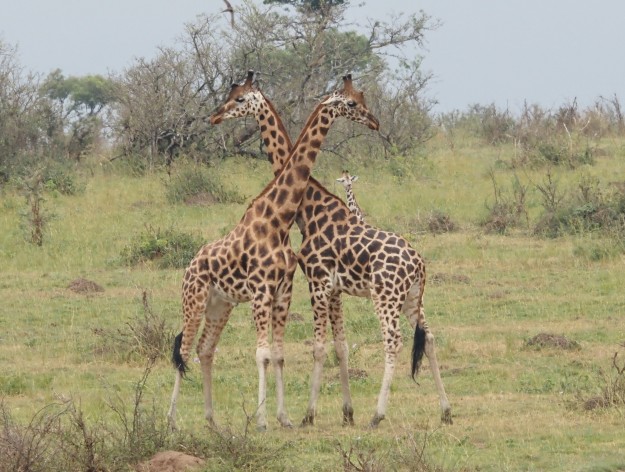
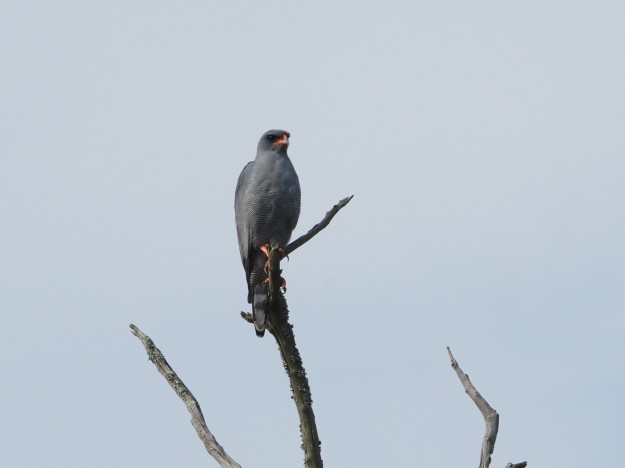

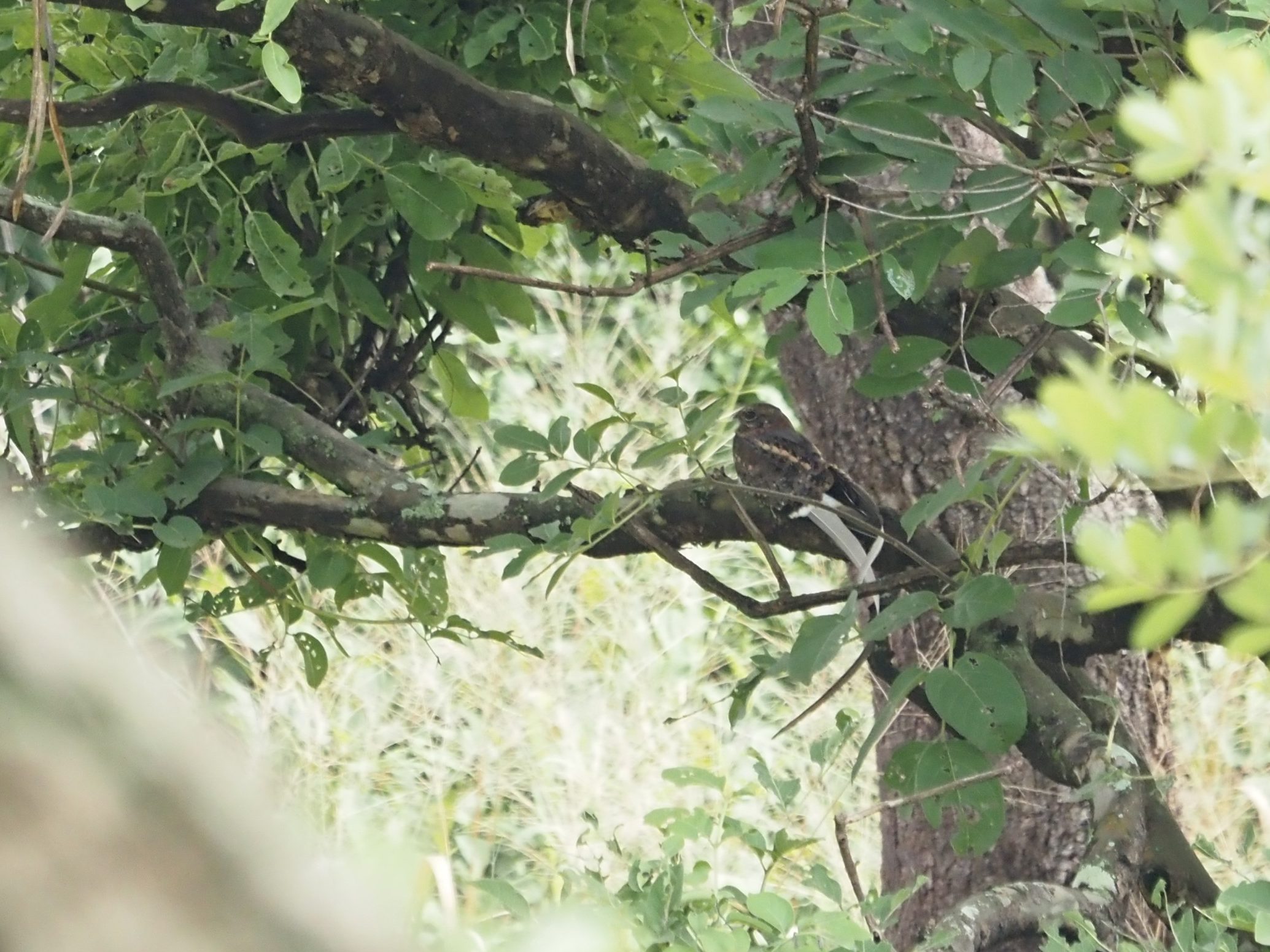
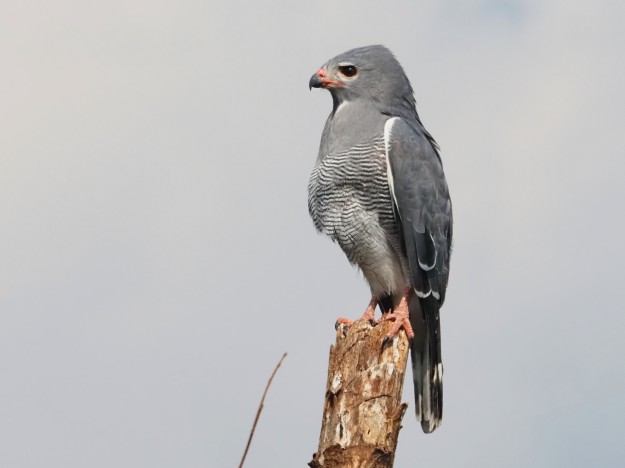
From this area, we drove South for the longest transfer of the tour (5h 30′) to arrive in the evening to the massive primary forest in the Kibale National Park. Midway down, we enjoyed the very tasty local food in a buffet restaurant, and we were surprised to see a small flock of Horus Swift flying above us for a pair of minutes!
From here still had a brief stop in a nice patch of forest, where we had 2 Blue-cheeked Bee-eaters flying above the canopy, while inside we spotted Honeyguide Greenbul, Little Green & Olive Sunbirds and Yellow-fronted Tinkerbird. Our very last stop of the day was not far from our accommodation in Kibale, and we enjoyed good views on 2 Highland Rush Warblers, another endemic of this very rich plateaus.
Day 5. Kibale National Park
Our day in Kibale started really early. Before daylight we arrived to the National Park headquarters, and while waiting for our armed scort we spend some time with a pair of African Wood Owls that were houling around. Even if we never enjoyed the bird perched, a pair of fly overs were a good entertaiment for our group before starting the walk in the jungle. Our first and most important target that day was the Green-breasted Pita, a scarce breeder in South West Uganda.
It is always a nice experience to be inside the jungle at dawn, listening the calls of Greenbuls, Sunbirds and Flycatchers. During the next two hours we enjoyed good views on a good variety of species, being Purple-headed Starling, Fraser’s Rufous Thrush and Red-tailed Ant Thrush the most interesting. But despite our efforts, we failed to have a proper view on the Green-breasted Pita.
At mid morning we walked away the area to focus in a family group of Chimpanzees nearby. Their noisy behaviour was a clear indication of their presence, and after many hours in the forest we were granted with a really close encounteer with a the Chimps. Females and small ones were really approachable, with the apes only a few inches away from us! The males seemed to be away, hunting or locating potential preys. We enjoyed the Chimps for about half an hour, enjoying several interactions of adults with the young members of the family. The group was mainly on the ground, but probably the most exciting moment was to see a pair of pursuits in the branches, mid way up in the trees with a lot of screaming and violent behaviour. Chimpanzees groups are highly hierarchical societies, and tensions can speed up when a member of the group sees its position threatened.
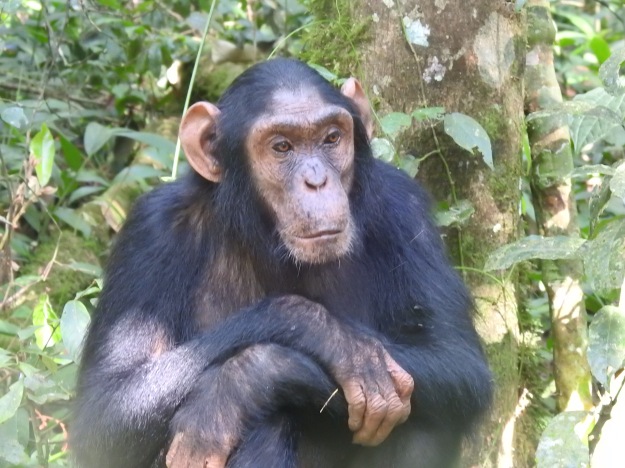

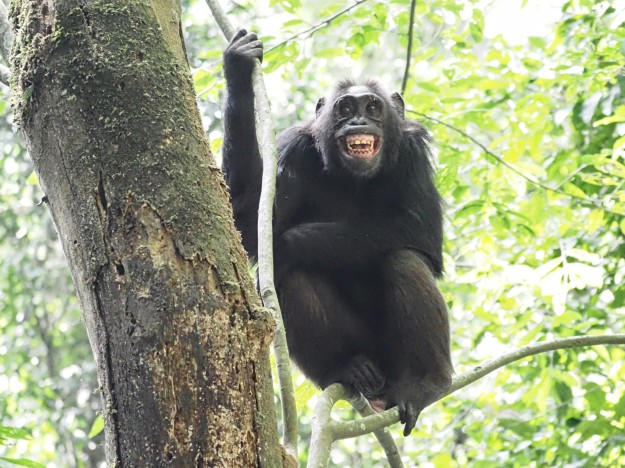
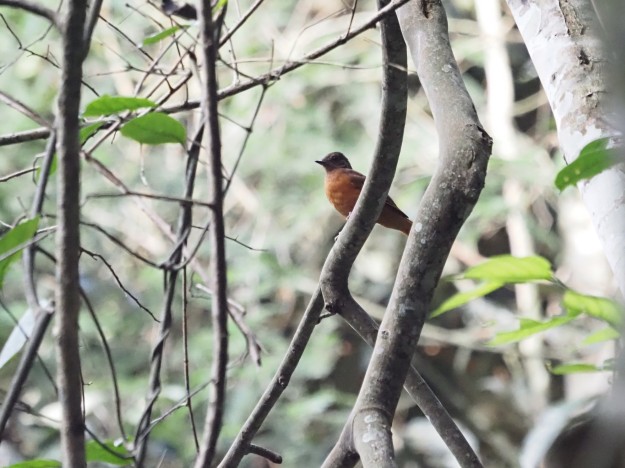
Once out of the jungle, we enjoyed a number of stops in key corners, enjoying the good variety of birds living in this area. In the way out of our accommodation, we were lucky to find a Marsh Tchagra feeding a Black Cuckoo in a small pond! Little Grey & Yellow-throated Greenbuls were noted, and an African Emerald Cuckoo catched all the attention while a small flock of Dusky Tits were moving high in the canopies. Here we also got the first Buff-throated Apalis of the trip, along with Chestnut-winged Starling and African Blue Flycatcher. The area was great for Sunbirds, and we got 7 species quite easily, including Grey-headed, Blue-throated Brown, Green-throated, Green-headed and Bronze!
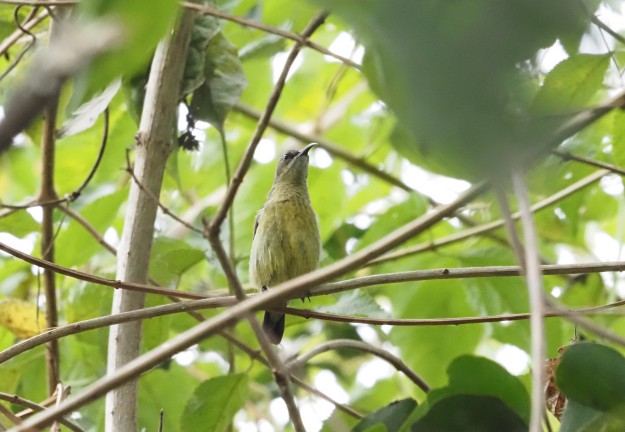
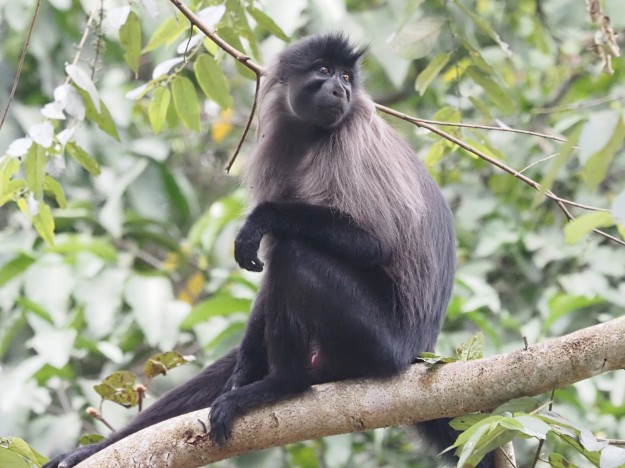
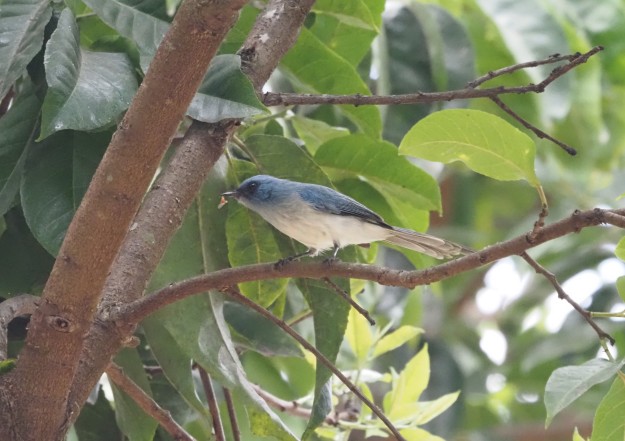
From Kibale we moved to the Semliki National Park. This sublime patch of Congolese jungle inside Uganda hosts some of the most scarce and difficult birds in the region. Unfortunately, to explore the area is not always easy due to the difficult terrain and umpredictable weather conditions.
In our way to Semliki, we had a pair of stops to add some interesting birds including Lead-coloured Flycatcher, Plain-backed Pipit, Piping Hornbill, Black Cuckooshrike, Grey-headed Nigrita, Sooty Flycatcher and a brief but intense view on a Scaly Francolin.
After this last stop, we walked inside our accommodation for a cold drink and a good rest!

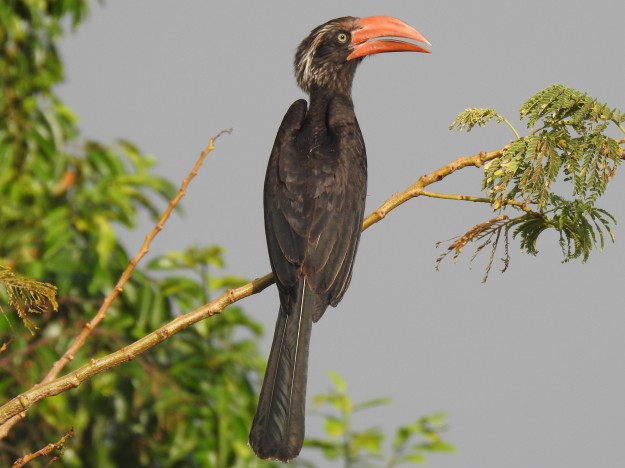
Day 6. Semliki National Park
Early morning start to explore a patch of jungle that connects with one of the largest patches of continous forest in Africa, getting well inside Congo. During the morning we contacted with a number of interesting species, adding to the tour list Crested Malimbe, Xavier’s Greenbul, Blue Malkoha, the very impressive Black-casqued Wattled Horbill, the small Red-billed Dwarf Hornbill, Black-billed Barbet, Jameson’s Wattle-eye, Black-bellied Seedcracker, Yellow-whiskered Greenbul. A fast glimpse on a Fire-crested Alethe that left the group wanting more of it, and trakking a group of Red-tailed Monkeys led us to find a always wonderful Western Nicator.
Here we also got excellent views on our second Narina Trogon, and a nice swampy area we had excellent views on both Yellow-footed Flycatcher and African Green Pigeon. Almost back to the lodge, we still had great views on Great Blue Turaco and a nervous Dusky Crested Flycatcher.
In the afternoon we drove back to Fort Portal, but adding a stop in our way in a nice habitat where we finally found a wonderful Cabani’s Bunting in full song! Here we also had the only one African Citril of the tour!
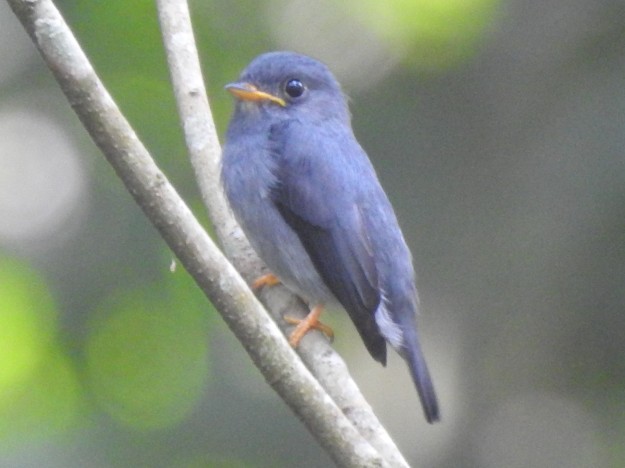
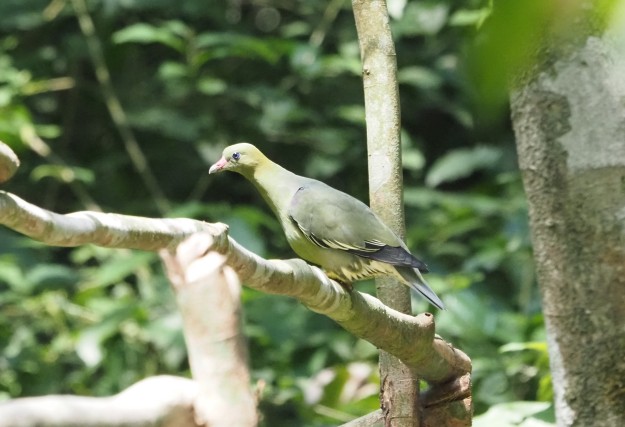
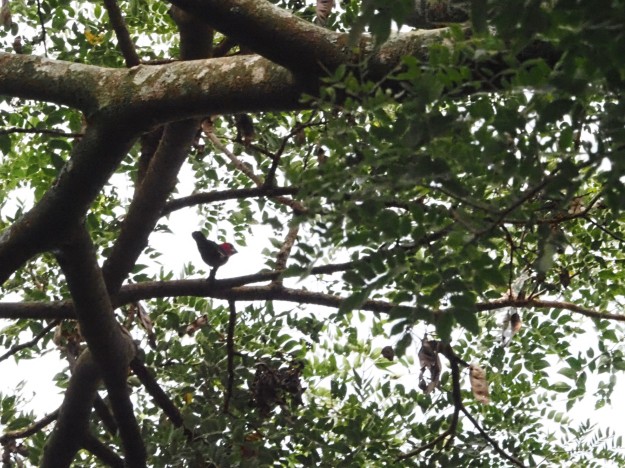
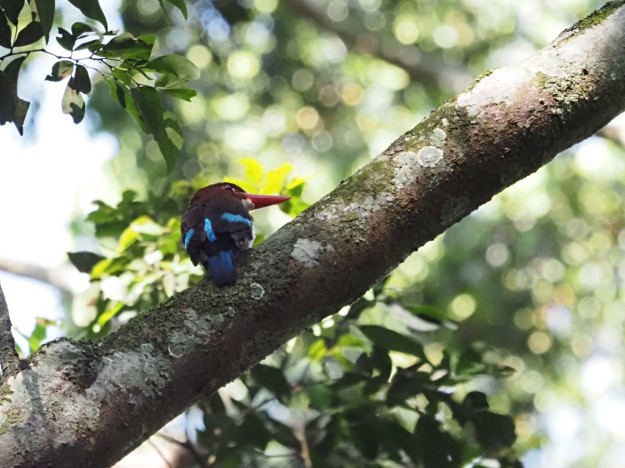
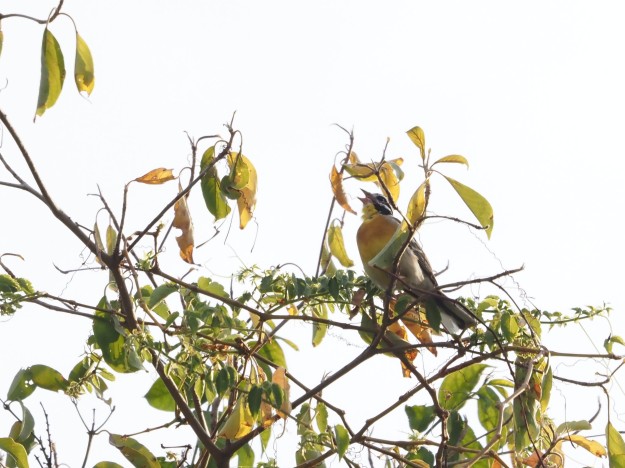
Day 7. Fort Portal – Queen Elizabeth National Park
Our overnight in Fort Portal allowed us to enjoy the good variety of ambients and birds. In another bright morning, along with the enchanting atmosphere of the volcanoes covered with dense forests and the deep blue of their lakes, we ejoyed anoher great birding day. A short walk in the forest beside our accommodation allowed excellent views on Green Crombec, White-chinned Prinia, Giant Kingfisher Joyful Greeful and African Goshawk. In the lake, Yellow-billed Ducks and Little Grebes were both feeding youngs while Palm-nut Vultures were still roosting in the trees arond the lake.
From here, two minutes inside te van were enough to reach a meadow rich in lush vegetation and papyrus. Here we got nice views on Black-capped Waxbills while getting the first of many Common Fiscals for the group while smalls flocks of Western Violet-back Starlings were passing by. An African Marsh Harrier was patrolling the area and several Tambourine Doves were in the move around, but after some minutes in the area we were hit by the wind, and or expectations to get some good from the papyrus vanished.
Back to the accommodation we went on with a short walk that explores an interesting mature forest. Here we got a number of interesting birds including Yellow-spotted Barbet, Joyful Greenbul, Little Greenbul, Buff-throated Apalis and Sooty Flycatcher while both Black-necked & Black-billed Weavers were new for the list. Here we also enjoyed wonderful views on Ashy Flycatcher & Lowland Masked Apalis, the last a top target bird for many birdwatchers visiting Uganda. Lühder’s Bush-shrike allowed good views even if never left the wines! Here we also got our first African Paradise Flycatcher for the trip, and Cassin’s Honeybird appeared shortly, leaving the group wanting more of it! During the walk we also tried to see White-spotted Flufftail, but despite our efforts and having the bird only a few meters away from us, we never contacted with it and the observation was reduced to a “good listening”. Here we still got to see some Cinnamon-breasted Bee-eaters in our way back to the accommodation, and when being really close to the cottages we were stopped by 8 Red Colobus hanging in the trees, joined by two Crowned Hornbills.
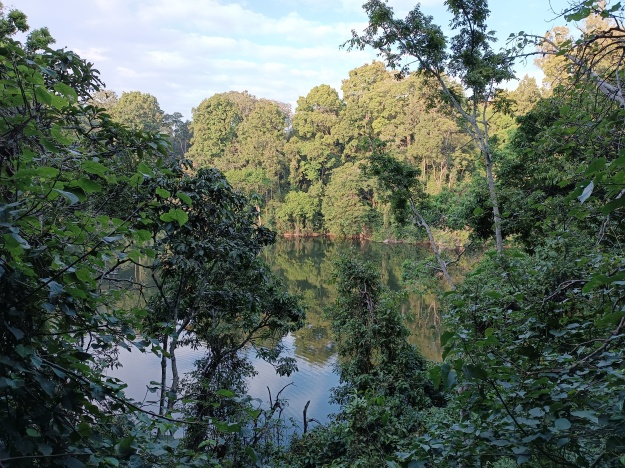
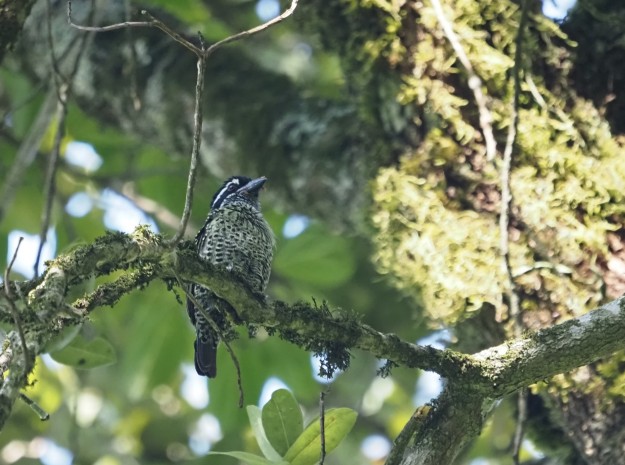

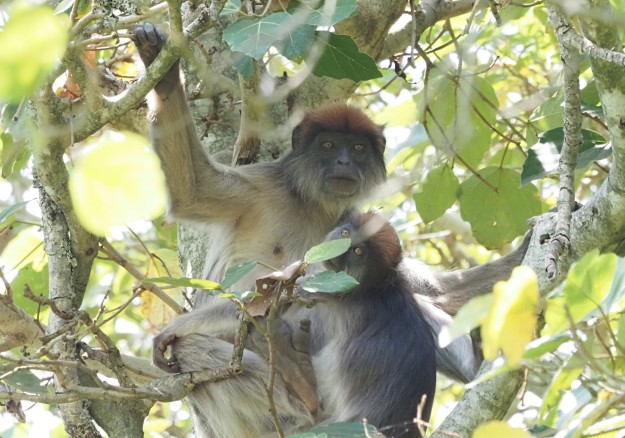

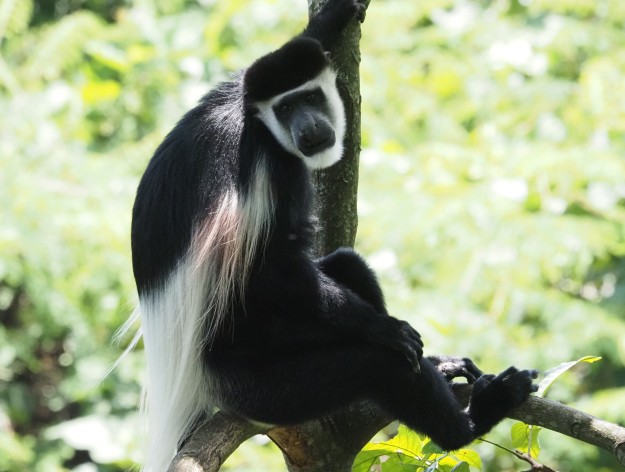
After a light lunch we left our accommodation. In our way to Queen Eizabeth National Park we had a number of stops, and Red-faced Cisticola, Olive Sunbird, Olive-bellied Sunbird, Dusky Flycatcher and Dusky-blue Flycatcher were added to the tour list. A further stop allowed us to explore some wooded hills. In these gentle hills covered with grass and scattered bush we got good views on Cinnamon-breasted Buntings, Northern Crombec, Red-cheecked Cordon-bleu, Chestnut-crowned Sparrow-Weaver, Beautiful Sunbird and the very handsome White-shouldered Tit.
After a pair of hours of driving we arrived to the Queen Elisabeth National Park, crossing the Equador line that separates the Northern Hermisphere from the Southern. Only a few miles beyond, an impresive Martial Eagle perched by the road was the unforgettable welcome to the Southern Hemisphere!
A bit later we arrived to our accommodation, but before we still had time to enjoy some Sooty Chats and Striped Kingfishers. Once in our accommodarion, and taking advantage of its amazing terrace overlooking the National Park, we enjoyed in the evening a good selection of specialities such as Double-Toothed & White-headed Barbets, Copper Sunbird, and scope views on a Peregrine Falcon perched on a tree and feeding on a prey.
Arriving to our accommodation around the Queen Elizabeth, we enjoyed Uganda Kobs, Warthogs, Elephants and Cape Buffalos. Once in our accommodation we enjoyed some local birding, and the baranda of the dinner area, overlooking the grasslands and woodlands beyond, offered us good looks.

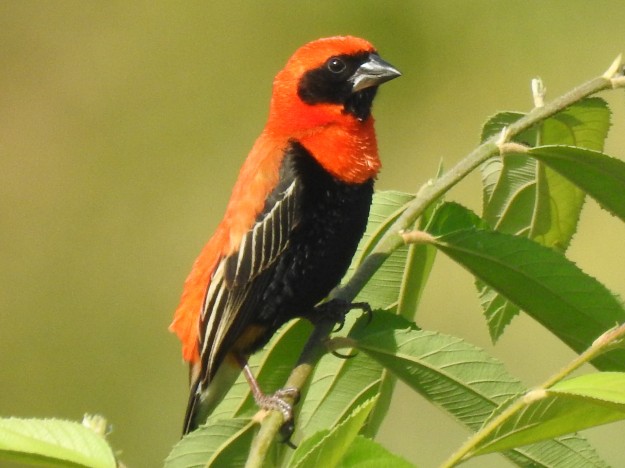
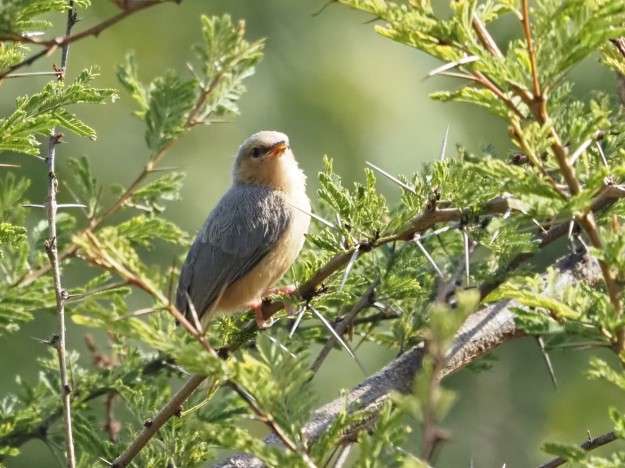
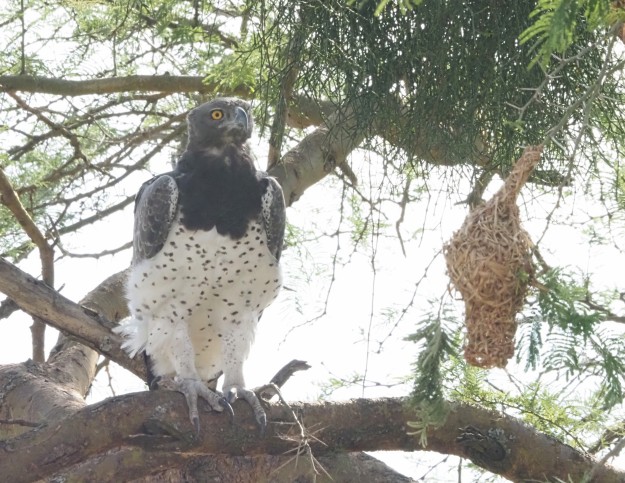
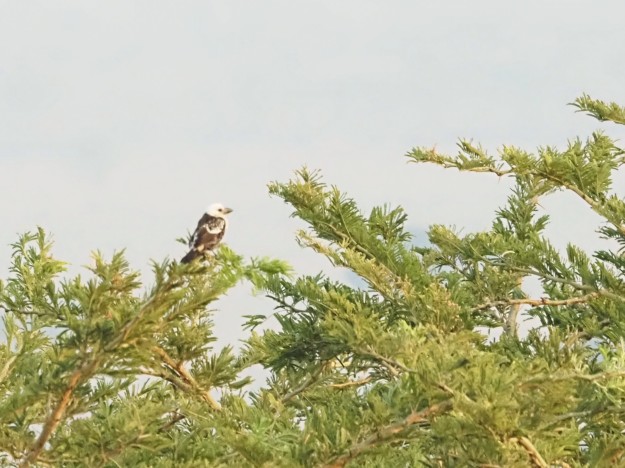
Day 8 . Queen Elizabeth
Our full day in the Northern area of the Queen Elizabeth National Park was a wonderful mix of bird & mammalwatching. After the rains during the last night, we woke up in a fresh ambient, and went inside the park with our packed breakfasts, ready for action. As soon as getting inside the National Park, Red-necked Francolins appeared to be everywhere. The firsts Black-lored Babblers appeared soon after, and our attention was soon jumping from herds of Elephants to Yellow-throated Longclaws, and from them to Cape Buffalos when a lovely flock of Water Thick-knees made us come back to birds!
Rufous-naped Larks seemed common in the area this year, as were Grassland Pipits. A pair of Black-bellied Bustards were noted, and the scanning of small ponds finally produced an African Crake running above the back of a huge Hippopotamus that was almost totally inside a muddy corner.
While enjoying our take away breakfast, we had a locely views on a salty lagoon, and here we got about 20 Lesser Flamingoes feeding along with Pied Avocets and Black-winged Stilts. Back to the grasslands, both Western Banded Snake Eagle and Common Wood-Hoopoe were really interesting addings before concentrating in Big Cats.
Our first goal to have more or less close views on Lions, and this quite easy to get as soon we were enjoying great views on a pack of 8 individuals that were enjoying some rest. But Lions are mostly active at the end of the day, so it means our pack was mostly resting (when not sleeping). Still, the impressive views of this huge predators is always impressing, no matter how far they are!
Our second target for the end of the morning was a it more difficult. Leopards are always tricky to get, but after some scanning around (and a bit of help) we finally enjoyed absolutely great views in one of this iconical predators. Leopards spend most of the daylight up in trees, where they are safe from attacks coming from Spotted Hyenas and Lions. And we can say that we were very lucky, not only because of the close views on the Leopard, but also because after 5 minutes enjoying the cat, it decided to go for a walk, and came down the tree to cross a patch of open terrain right beside us, providing once again in our tour an unforgettable moment!
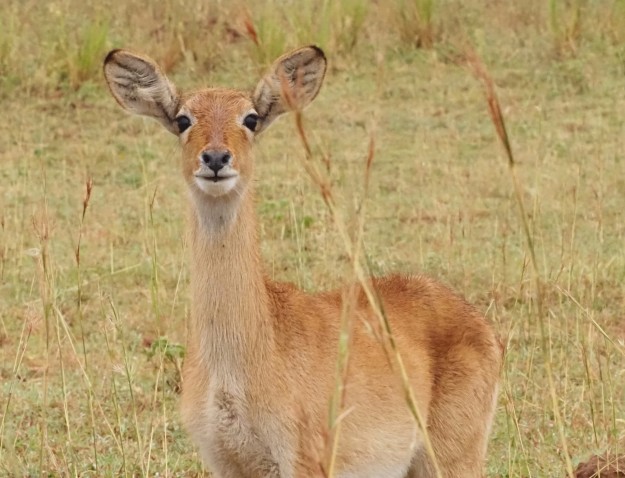

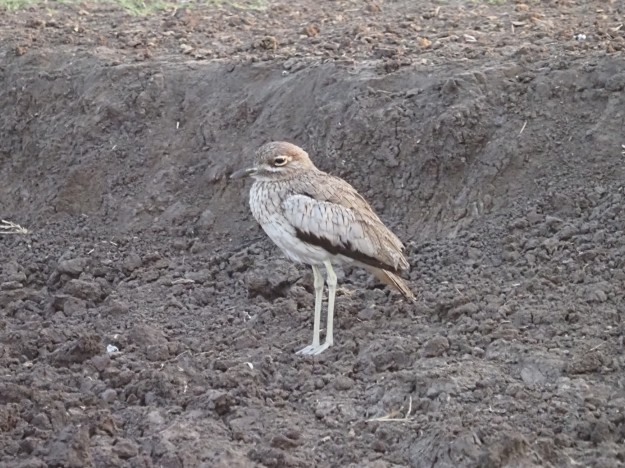

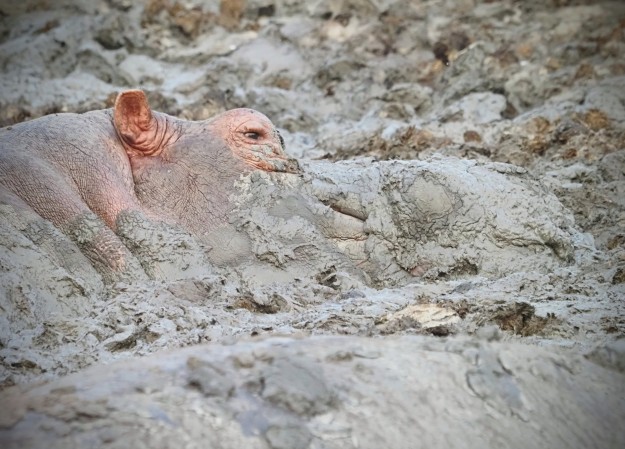
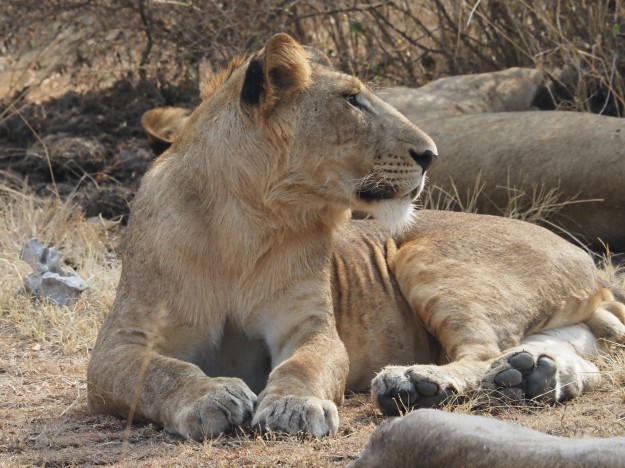
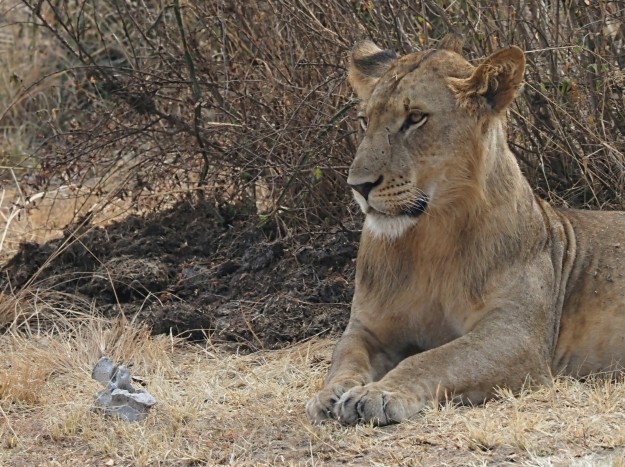
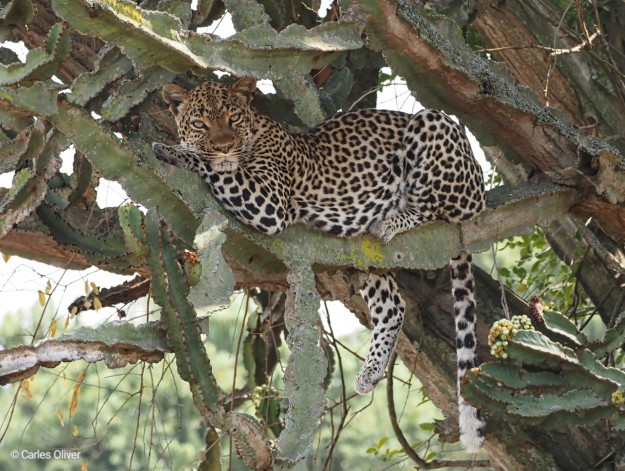
After such a great morning, we came back to our accommodation for some lunch and rest. The afternoon was devoted to explore the inner bank of the park. Here we were surprised by an old male Elephant that was blocking the traffic in a local road! We spend some time around a pair of lakes, where we found the first Golden-breasted Bunting and the only one Goliath Heron of the trip! The rest of the afternoon we searched for Common Buttonquail, but without success. Still, we enjoyed good views on Flappet Larks, Stout Cisticolas obliging views on a Palm-nut Vulture and, at sunset, we had gorgeous views on 2 Pennant-winged Nightjars displaying around us before a pack of Spotted Hyenas appeared a pair of metres away in front our vehicle!
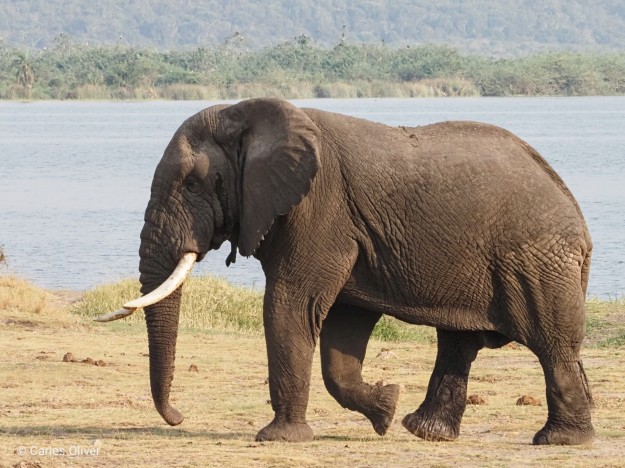

Dia 9 .Queen Elizabeth to Inshasha
This day crossed this massive National Park to explore its Southernmost part. Still, in the morning we had 3 hours of impressive birding around our accommodation. There, taking advantage of the good combination of moist grasslands and Acacia woodland, we enjoyed species such as Brown-backed Srub Robin, Brown Snake Eagle, Crimson-rumped Waxbill, Nubian Woodpecker, Moustached Grass Warbler and White-chinned Prinia. In the thickets the group got good views on Sulphur-breasted Bush-shrike, Black-headed Batis, Northern Black Flycatcher and Double-toothed Barbet while Spotted-flanked & White-headed Barbets and Great Scimitarbills remained always up in the trees. Holub’s Golden Weaver was added to the list, and the rich bird activity in the grasslands not only allowed us good views on Red-faced, Stout and Croaking Cisticolas but also favoured us with excellent scope views on both Dark-capped and Grey-capped Warblers!
All of this while flocks of Madagascar Bee-eaters and Lesser Striped Swallows were around us, and the very last Palm-nut Vultures were leaving their roosting sites.
Leaving behind the grasslands, we did a short visit to a papyrus swamp. Here, we were granted with good views on Lesser Swamp Warbler and Papyrus Gonolek, even if the location was more calm than expected. A fast check to the area around also produced good looks on Swamp Flycatcher and the firsts Striolated Herons of the trip. Indeed, here we also got the best views of the tour on Slender-billed & Yellow-backed Weavers!
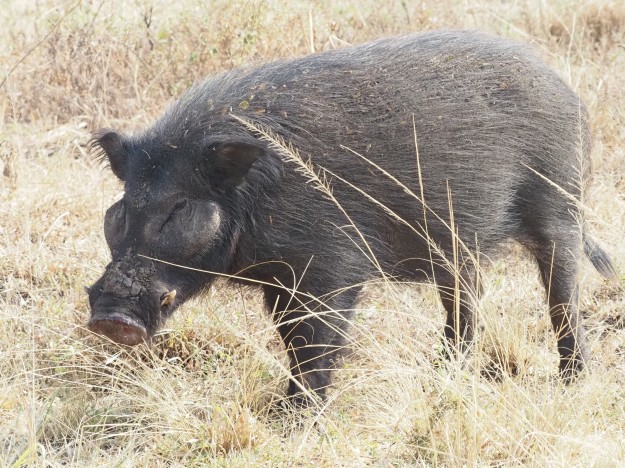
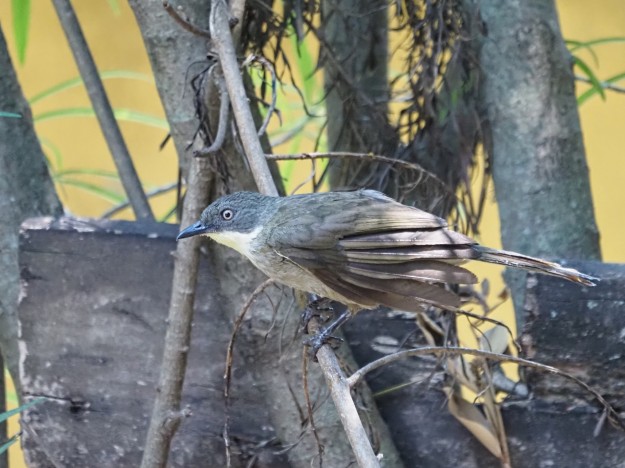
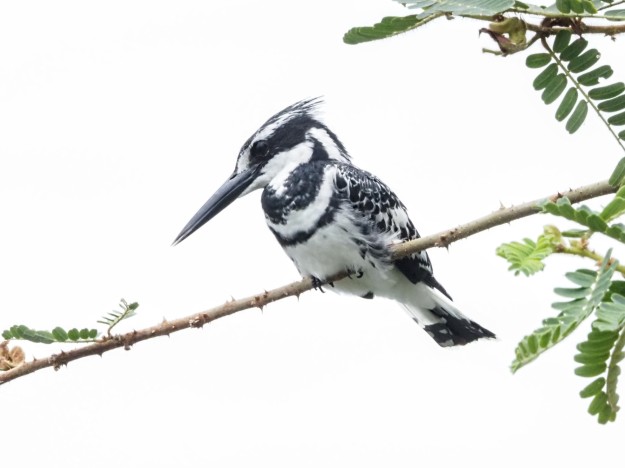
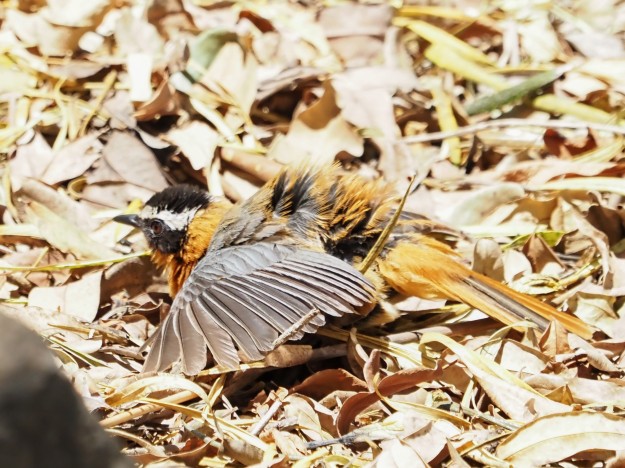

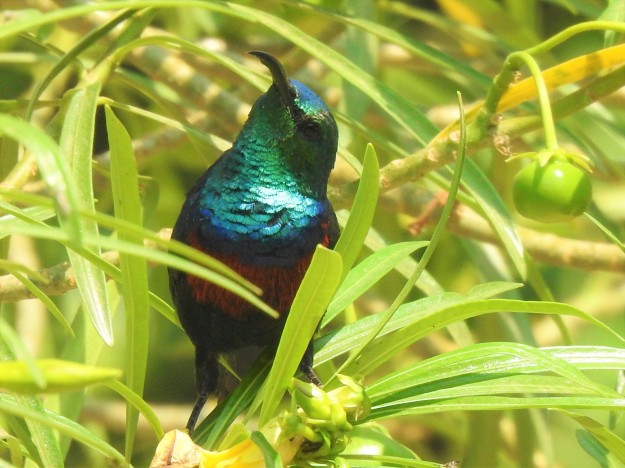
It was already mid-morning, so we started our way to the Southern banks of the Queen Elizabeth National Park. Before going, the group enjoyed really close looks on 1 Forest Hog feeding by the road! Our transfer to the South didn’t produce much, but a pair of stops in the way allowed us to connect with the first Cameroon Sombre Greenbul, Speckled Barbet & Dusky Tits of the trip, but also more chances to compare Little & White-rumped Swifts at close range. Still, the most wonderful moment of the stops along our way was when 3 Chimpanzees decided to cross the road right beside us while we having a break to eat something light.
Once in our accomodation, we could enjoy some of the good birds of the garden, that included Tropical Boubou, African Paradise Flycatcher and Arrow-marked Babblers. After a good rest we came back to birding, this time to explore the National Park on its Southern part. A few minutes after leaving the accommodation, we had a wonderful moment when 3 Green Wood-hoopoes decided to stop close to our vehicle while a Grey Woodpecker was seen working a lower branch nearby.
Contuining our driving among Uganda Kobs and Elephants we did get inside the National Park, exploring a small patch of grass which is great for larks. Soon we had good views on both Rufous-naped and Flappet Larks, but the best was still to common, as a White-tailed Lark just flew right to side of the van, providing excellent views to all the participants.
After this wonderful spot, we drove a bit beyond to a water wole. There we enjoyed a large concentration of Uganda Kobs, but also African Sacred Ibis, Black Crakes, 1 Intermediate Egret, 1 Saddle-billed Stork and, the most impressive, a Shoebill Stork that, even if rather far if compared with the view that we all enjoyed the first day of the tour, it was still great!
We were moving fast to the sunset so we moved to our last spot, arriving once it was dark. There we tried to see African Scops Owls, as we had up to three individuals singing around us. Unfortunately and despite our efforts, we never got to see them!


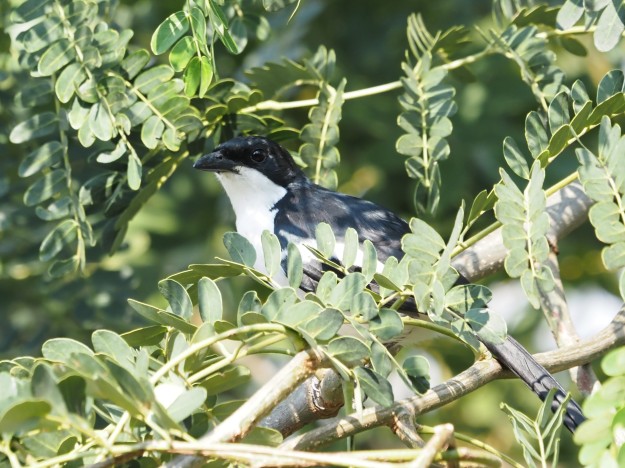
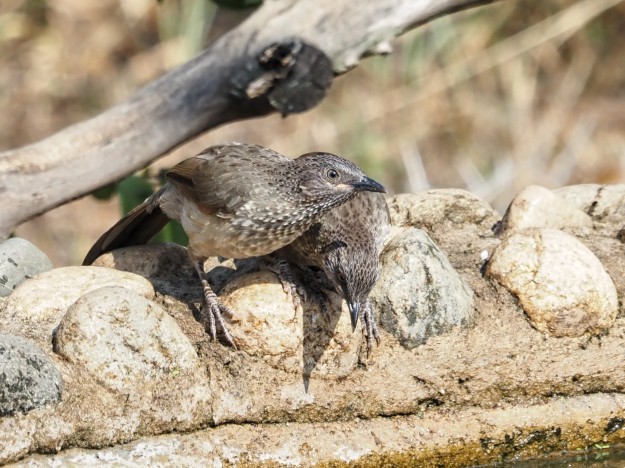
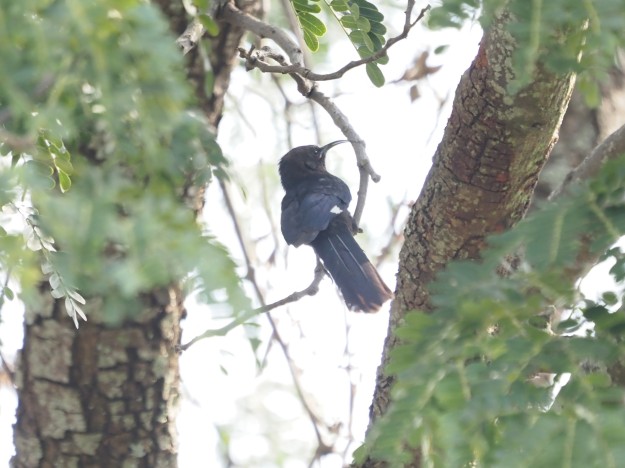
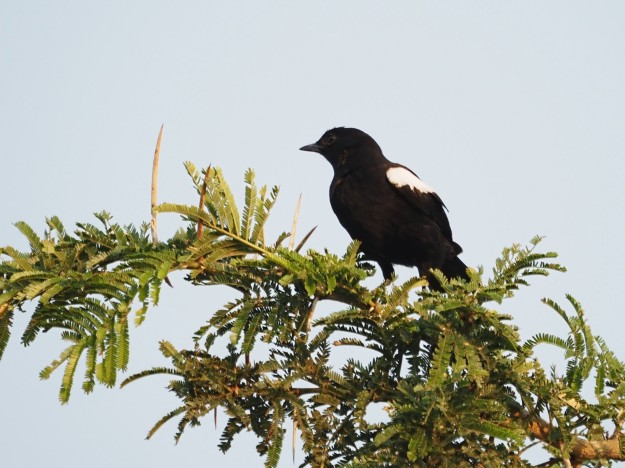
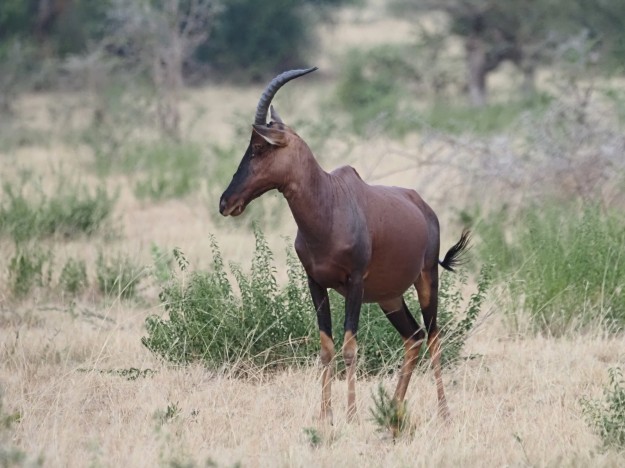
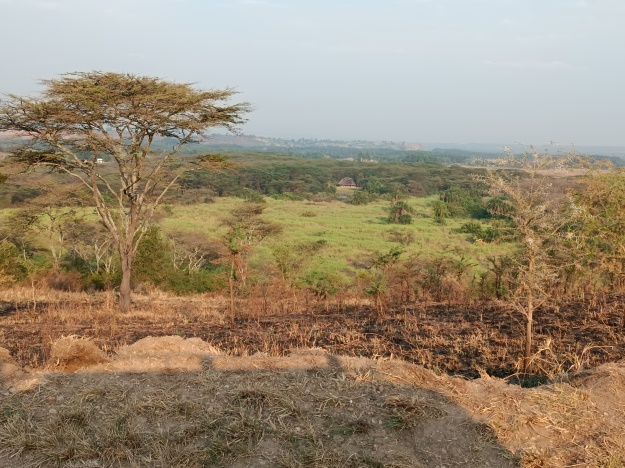
Day 10 – Queen Elizabeth – Mwindi
Transfer day between the lowland woodlands and the impressive mountain jungle in the Bwindi Impenetrable Forest. During the day we had a number of stops to enjoy the good variety of birds leaving as we went the slopes up. Near our accommodation we got really close views on Double-tooth Barbets and 2 gorgeous Thick-billed Seeadeaters. From here we crossed a number of cropped valleys, with remants of the natural forest at the bottom of them. Here, the tea is again the dominant crop in the best slopes, while the most steep are reserved to other crops.
Further on, a new stop became mandatory when we found a small flock of Black Bee-eaters feeding about 100 metres away from the road. Once out of the car, all the tour participants enjoyed great views on this really sought-after species! Along with them, a flock of Dusky Tits was also present while some African Green Pigeons were also in the move.
Early in the afternoon we were already in the Impenetrable Forest, and we had a pair of walks trying to find some of the goodies living there. We were lucky to find some endemics including Red-faced Woodland Warbler, Mountain Masked Apalis and an obliging Rwenzori Apalis, but the very best bird of these two stops was to find wonderful Black-faced Rufous Warbler, a species normally heard but not that easy to see! Extremely elusive, it took several minutes to get everyone to have at least some views in this impressive bird. A bit beyond, a Cassin’s Flycatcher was waiting for us in a river, its flauting song emerging from the crystalline water and spreading out into the jungle! A scoped Fine-banded Woopecker was also an excellent adding to our list, but was less celebrated than the Sharpe’s Starling that appeared right by the car!
This road keeps going up the slopes for several miles, and a flock of Dusky Tits was a milestone for another stop. Here we didn’ have that much out of some lovely Brown-capped Weavers, the first Grey-throated Barbets of the trip and an impressive African Crowned Eagle perched in a distant branch! This sight was among the top 3 moments of the tour according to our guests. The views on the scope of this massive bird of prey made us think about all the Black-and-White guezera Monkeys in the area, and we counted ourselves lucky to be big enough to not be in its menu…

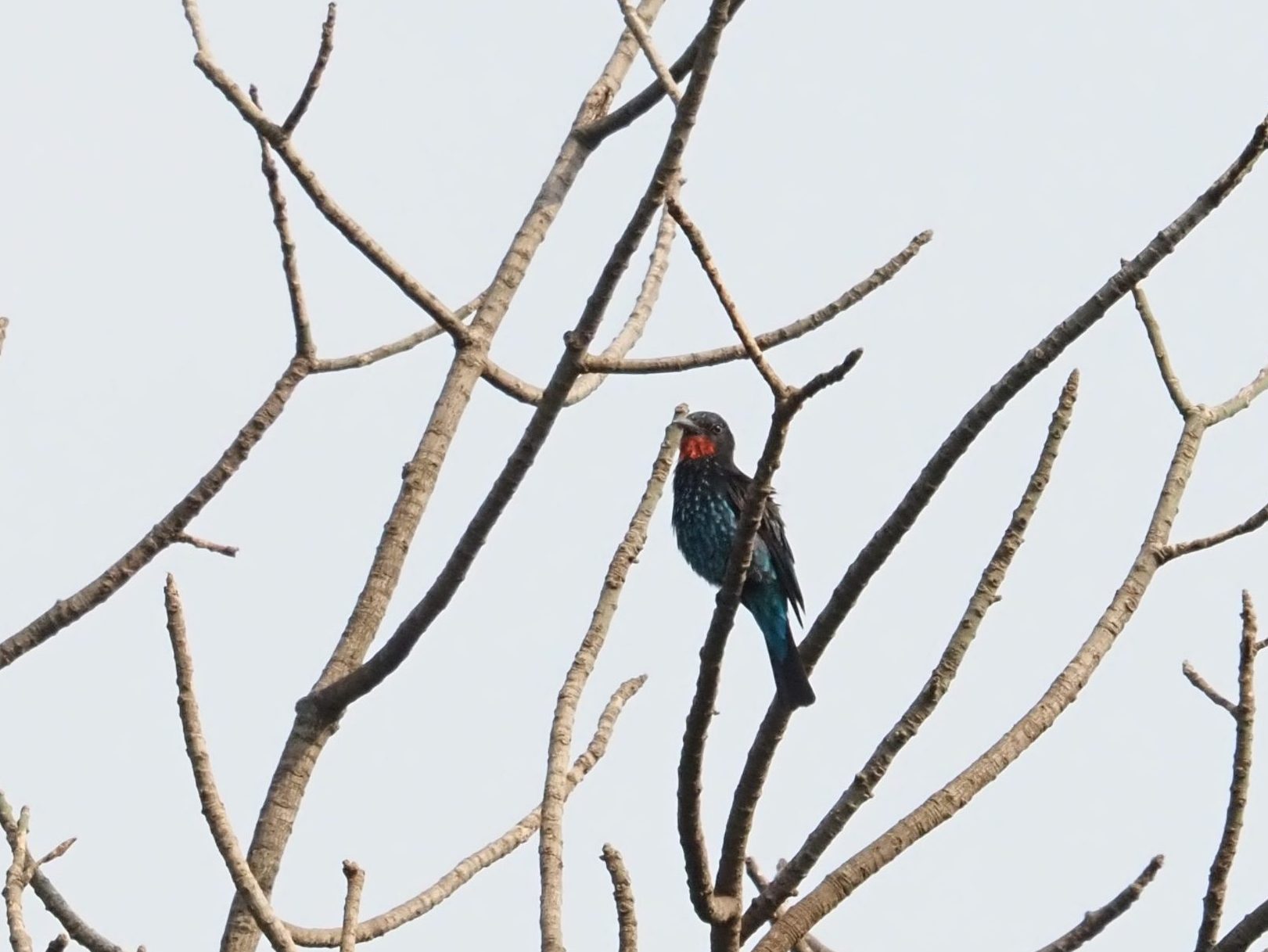
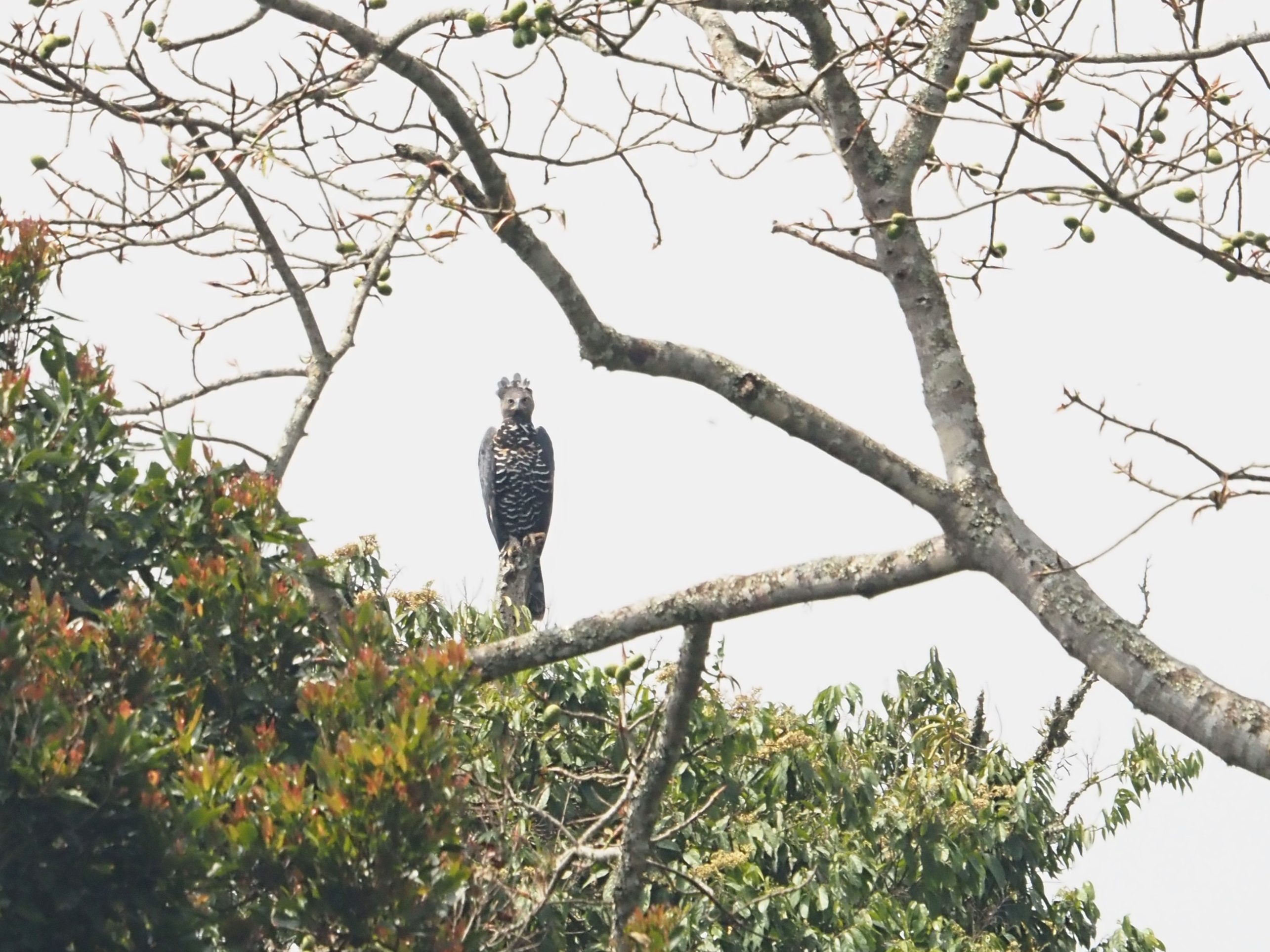
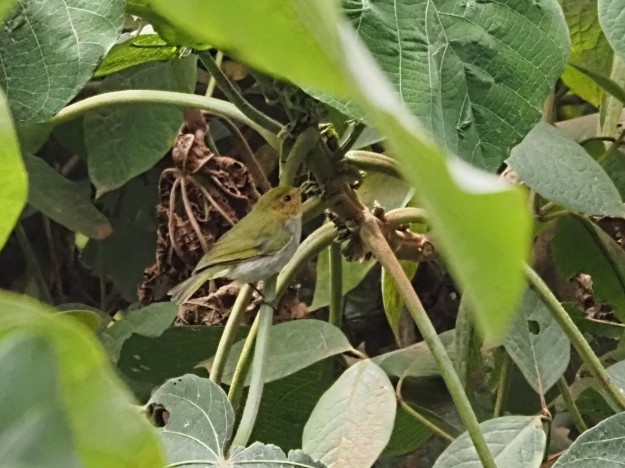


Day 11 – Bwindi Gorilla Trekking
The Impenetrable Forest in Southern Uganda is an impressive 330 square kilometers area of ancient mountain cloudy forest. This jungle, survivor of the last glaciations, is one of the oldest forests in Africa. Its density is proverbial, and its dark slopes not only are home for over 300 species of birds including several endemics, but also for Eastern (Mountain) Gorillas and Chimpanzees. Indeed is the only natural spot in the world where you can find two apes. Besides, this beautiful landscapes of steep slopes and narrow valleys is also home for the very last Pygmy Humans in Uganda. Communities extremely threatened by habitat loss and contact with economic activities, including tourism.
After enjoying breakfast in our accommodations, we were back to our cabins deep in the forest to prepare ourselves for a intensive Gorilla trekking. This morning will be devoted to get in conctact with our closer relatives inside the mountain jungle. Before the march, we were conveniently adviced about all the security details to be considered for the safety of both Humans and Gorillas. Our group was lead by two rangers and one tracker that was able to follow the apes deep in the forestry.
During the walk we enjoy few birds, but we still had good views on Montane Oriole, White-eye Slaty Flycatcher and Northern Double-banded Sunbird. After 90 minutes of walk our traker was informed that a family group of Gorillas was nearby. In silence, we approach them and we were all soon having excellent views on a group of 1 individuals resting on the forest floor. Even if the most notiable was the sice of the massive “silverback”, the presence of the babies in the group provided us with unforgettable images of them playing, running and interacting with other members of the group.
The experience to have these massive animals, so close related to ourselves, is simply beyond any word!
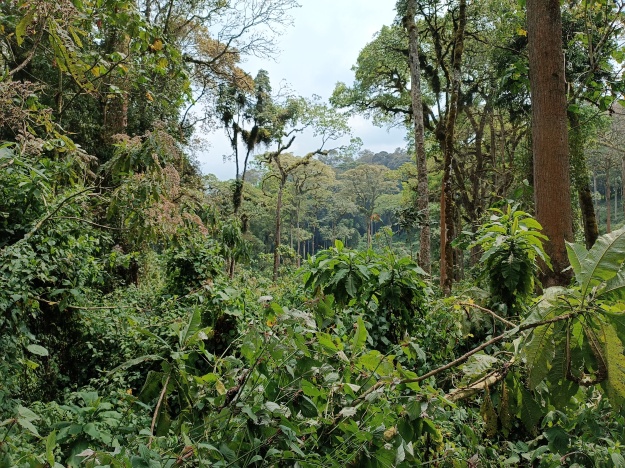
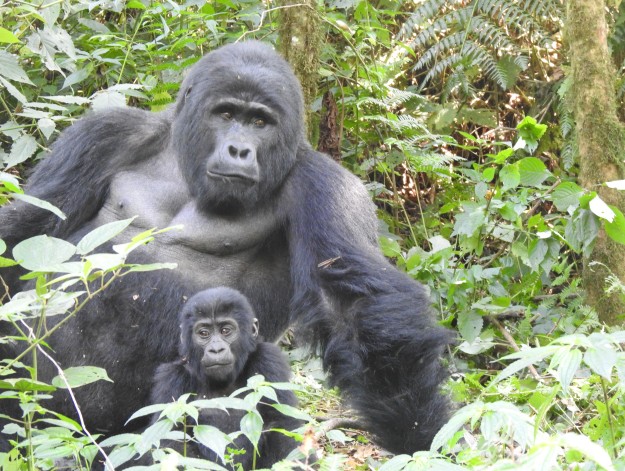


Back to road, we went back to our accommodation for some rest before coming back to birding bussiness in the afternoon. The birding after lunch was devoted to explore some forest patches inmediatly around our accommodation. There, we enjoyed excellent views on both Mountain and Yellow-striped Greenbuls and first but incomplete views on Rwenzori Hill Babblers and Rwenzori Batis. Regal Sunbirds showed really well, and we were lucky enough to enjoy a small flock of Tuftet-chested Sunbirds feeding, including a full mounted male! This sighting is specially nice since this species tends to be scarce, and many times difficult to find! Other good birds along our walk included White-tailed Blue Flycatcher, and Streaked Canary and Mountain Buzzard were also added to our tour list.
The last stop in the evening was reserved to look for one fo the most special endemics in the Rwenzori Mountains. With the very last lights of the night a Rwenzori Nightjar emerged from the shadows of the forest to fly around us, and after a pair of pass-byes, to stop a few meters away from the group, allowing everyone to have great views! This was one of the best moments in the tour, as this Nightjar, formerly considered to be conspecific with Montane Nightjar but no considered a different species based on DNA analysis, morphological assets and calls.
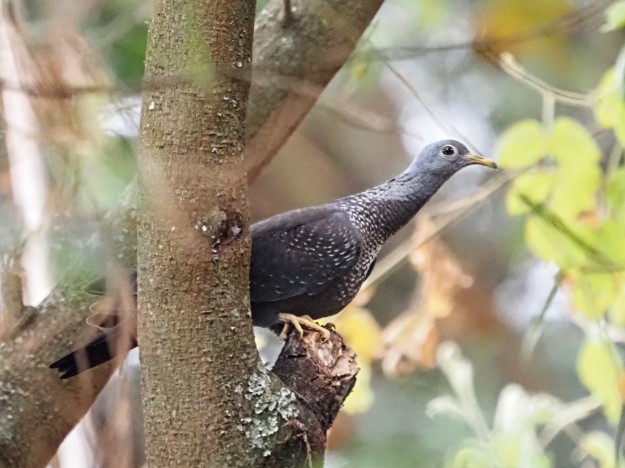

Day 12. Bwindi Birding
After the long Gorilla trekking, much longer than expected, today we were suposed to climb up the hills in search of the poorly known Grauer’s Broadbill. But the evening before we all arrived to the consensus to swich the long walk for a relaxed birding in search of the long list of endemics living and other good birds living in these mountains.
So, after a not-that-early breakfast, we moved by food to nearby open slope. But even before leaving our accommodation we had a new adding to our list, as a wonderful Brown-crowned Tchagra popped out in the hotel gardens. This is a scarce species up the hills, and a great addition to the group list. Once beyond the hotel facilities, we explored a slope with remants of the former natural grasslands combined with different crops. Here we enjoyed the strong, unmistakable Chubb’s Cisticolas song, and the flauty sounds of the Cape Robin Chats. A pair of African Stonechats were catching insects from the tea bushes, and a flock of Yellow-bellied Waxbills were feeding on the ground. But the best bird of the stop was the pair of Dusky Twinspots feeding along with the Waxbills. Another endemic in the bag! From here we turned to the forest, and a short walk around the impenetrable tangles allowed us to enjoy close ups to Rwenzori Apalis & Batis. Some Red-faced Woodland Warblers were also feeding around, and Banded Prinia was appearing shortly but left a great impression in our group! As much as the bizarre bird was considered for some the bird of the day! The general birding was also great, adding Grey Cuckooshrike and Black-billed Turaco to our list. A bit beyond, a Mountain Buzzard was spotted sitting in a dead branch, at the same time that some Black-throated Apalis showed up in a superb way, and only a pair of minutes after a Grauer’s Warbler started to sing in the tangles. It took several minutes and some effort but at the end everyone in the group had at least some views in this enygmatic and really difficult to spot bird. A few meters beyond a pair of Western Canaries were also a good character for the photographers in the group. This species, recently split from the African Citril, is probably the very last endemic to the Rwenzori, so far! When coming back to our accommodation for a good lunch, we still had to White-naped Ravens flying above us.
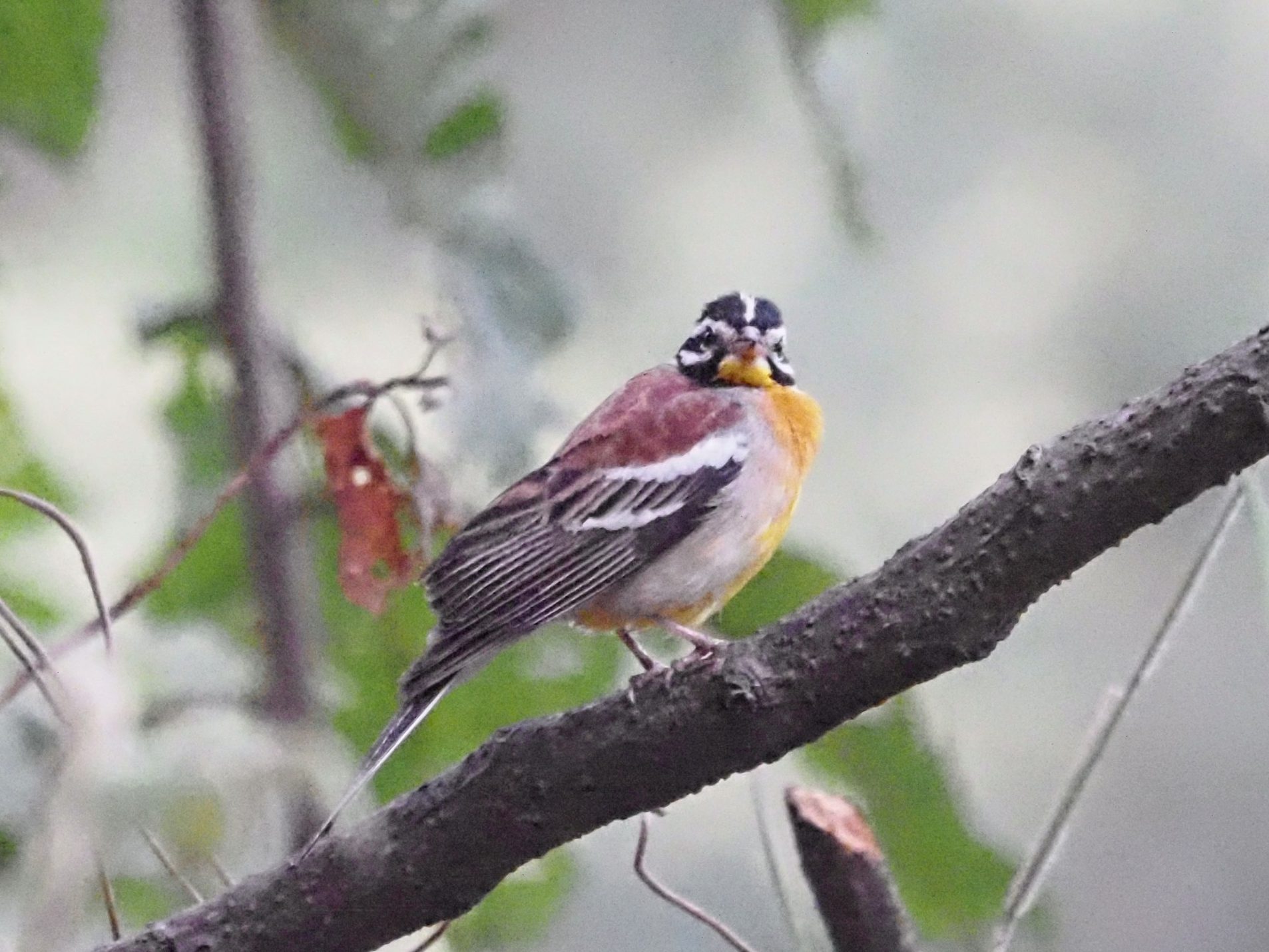
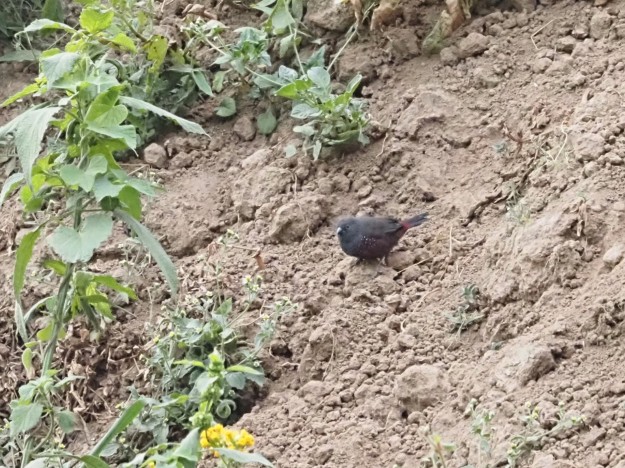
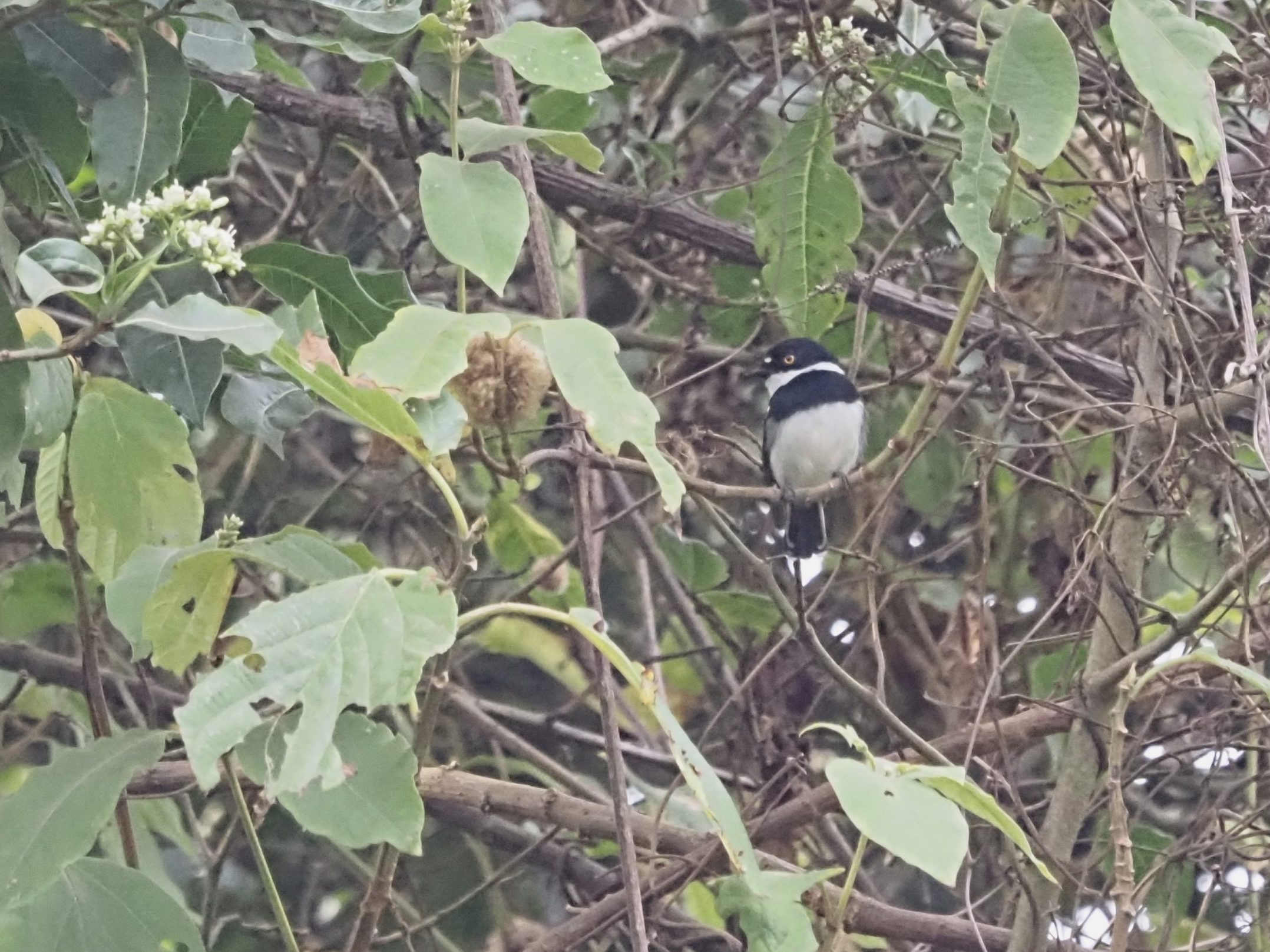
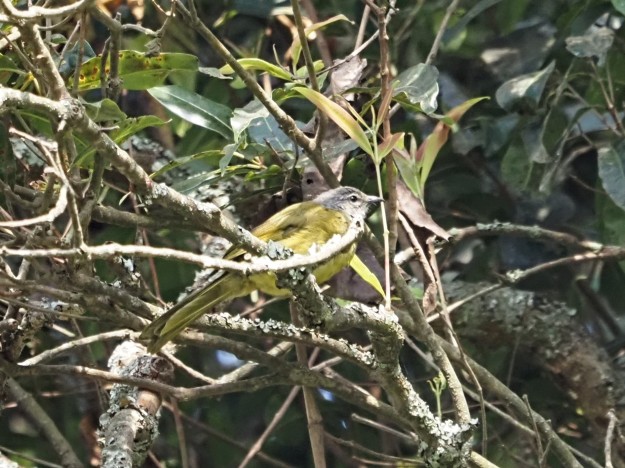
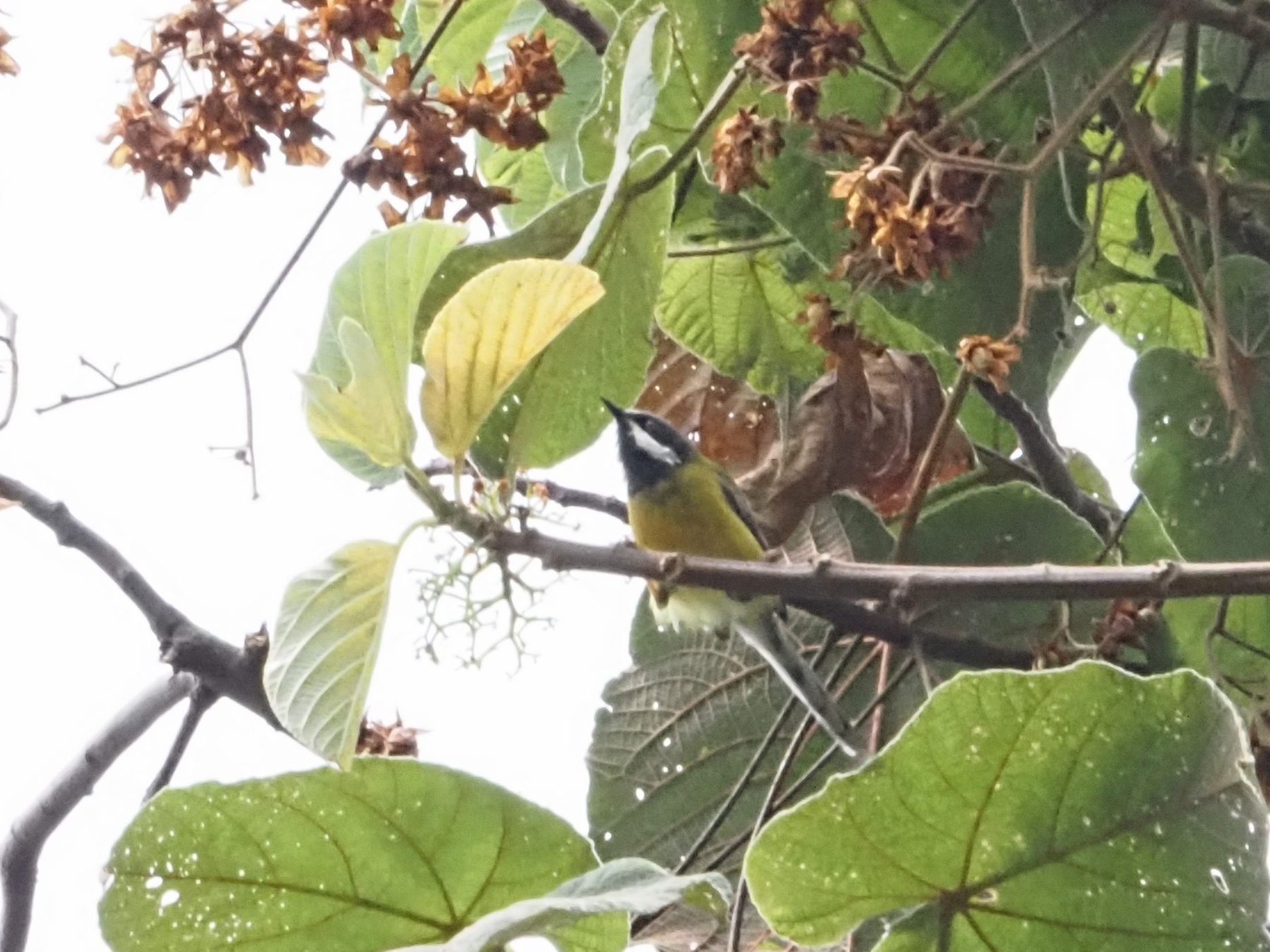
After a nice lunch and some rest we went back to the forest, where we had a short but nice selection of birds. A Dusky Turtle Dove showed up just when living our accommodation, allowing some shots. Beyond, we had our first Stülhmann’s Starling, and a few meters beyond we were lucky enough to enjoy a mixed flock of this rather scarce species along with 4 Shaper’s Starlings. A long fight was necessary in order to bring a Archer’s Robin Chat into the light, but even if we had good views on the bird, it left us wanting more of it! Another great bird appeared only a few minutes later, as three White-headed Wood-hoopoes came in flight to stop right beside us, with lot of loud calls, flikering and social activity between individuals, that soon disappeared back in the jungle. We still searched for more specialities, but the weather was quite cold and cloudy, and bird activity collapsed after 18:00. After some more time we decided to come to our accommodation, but not without an expected view of a male Purple-breasted Sunbird at close range was one of the highlights of the afternoon.

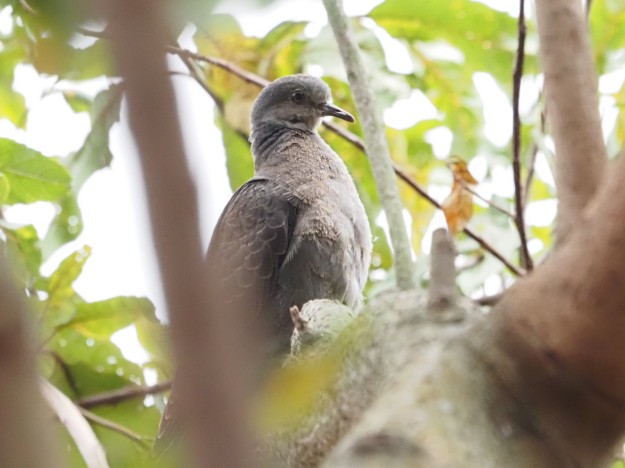
Day 13. Bwindi to Nburo National Park.
Transfer day between the high mountain in the Albertine Ridge to the dry woodlands in Nburo National Park. An early start was necessary to try to catch with more endemics in the highland forest. Despite that the morning was not that productive as expected, we still got excellent views on Chestnut-throated Apalis, Yellow-streaked Greenbuls and we added Yellow-eyed Black Flycatcher and a lovely Handsome Francolin to our already long trip list. Here we also got the best views on Regal Sunbird in the trip, as this wonderful endemic stopped right in front of us to show itself for a pair of minutes while singing his heart out! Several Mountain Illadopsis were also calling around, and after some work we did get a glimpse in this shy underworth specialits than, despite our efforts, was not enough for most of the tour participants.

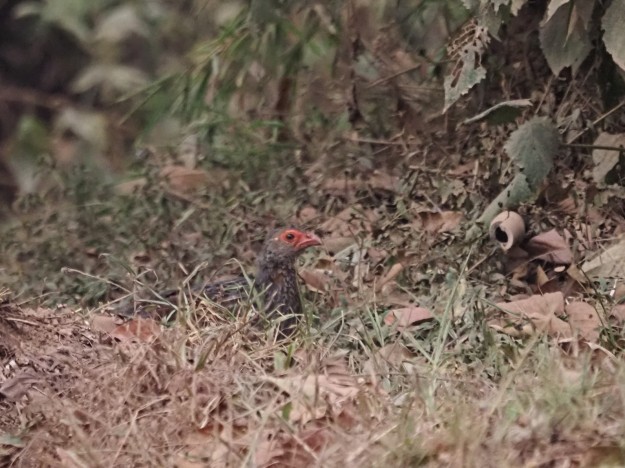

From the mountains, we had a transfer to East, arriving to the Nburo National Park in the afternoon. Here we were welcomed by herds of Plain Zebras and Impalas, but our goal for the afternoon was our boat trip exploring the Nburo Lake. A family group of Giraffes in the track was about to ruin our plans… Finally on board, we were soon enjoying the first of 6 (!!) African Finfoots feeding along the lake shore along with Water Thick-knees, African Wattled Lapwings and 3 Wood Sandpipers. African Finfoots can be a really challenging bird, and we were all delighted to see so many of them. During the boat trip we had the chance to see them feeding, but also walking out of the water, interacting with Striated Herons, and we even enjoyed an individual roosting 2 metres high in a branch. The lake was full of Hypos, and some large Nile Crocodiles were also a main attraction along with the many African Fish Eagles around. Some Yellow-throated Greenbuls were also noted, but probably the most remarkable sight of the boat trip (apart from the Finfoots) was the unexpected sighting of a (distant) Great Painted Snipe having a word with 2 Wood Sandpipers.
Back to the ground, we were back to the main birding spots in the park, and we were soon delighted by some Bared-faced Go-away-birds when our van had a breakdown. The engine failed and the efforst of our driver didn’t work at all. Fortunately, we were really close to our accommodation, and we were “gentlely” rescued and transported to our lodge. In the way, a magnificent Leopard was a phenomenal reward for the hour of good light that we lost because of our van breakdown…
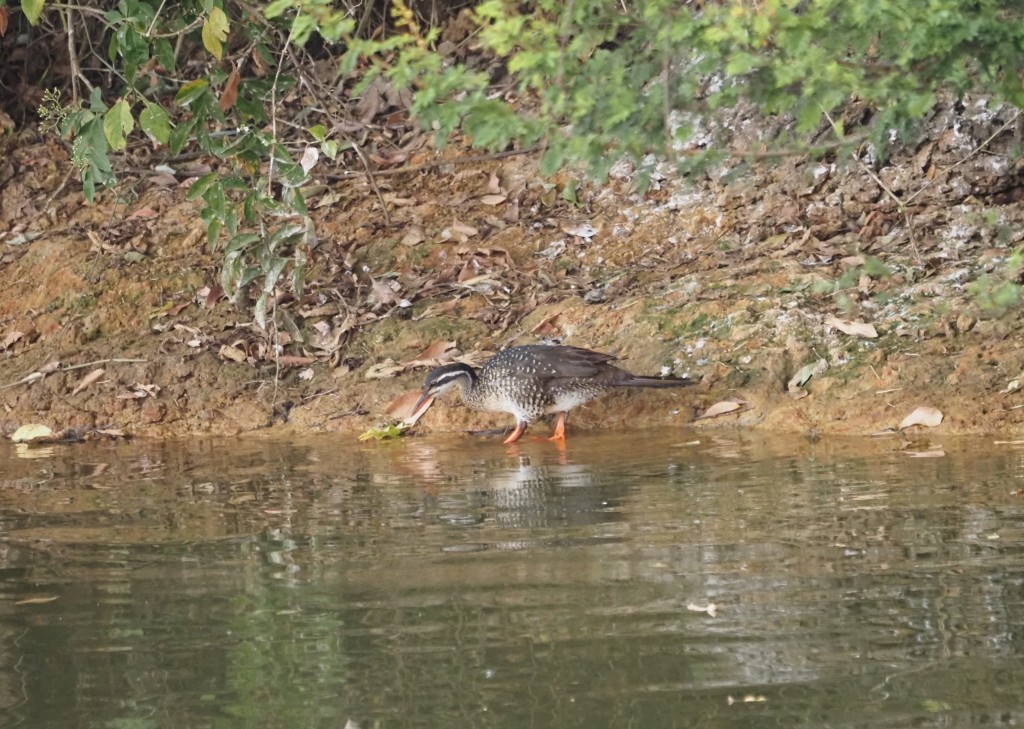

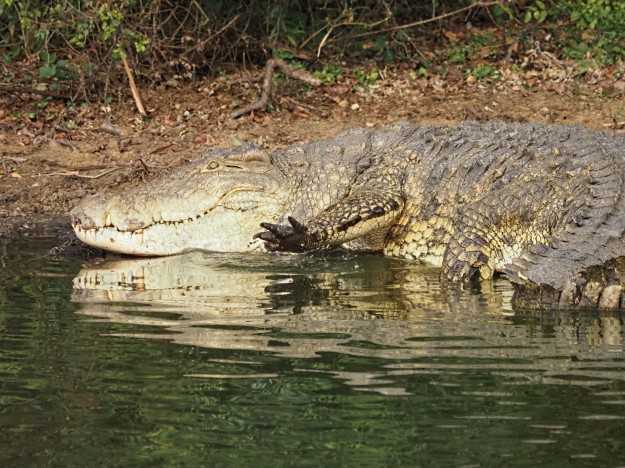
Day 14. Nburo National Park – Entebbe.
Early morning start to catch up with the very first light and recover a part of the hour lost with the breakdown of our previous van, and enjoy the new car sent from Entebbe during the night. The day was fresh and partly cloudy, a wonderful weather to enjoy the good variety of birds living in the area. After a short walk around our accommodation we fastly connected with a good number of goodies including several Trilling Cisticolas, Grey-backed Fiscals and Bare-faced Go-away-birds. Here we also got the only one African Hoopoe of the trip, as well as wonderful views on Cardinal Woodpecker, Red-faced Crombec and Spot-flanked Barbets. Here we also added the majestic Meyer’s Parrot to trip list, and a pair of skulkers: Yellow-breasted Apalis and Red-faced Barbet. Despite all of this, the very best sight of the short walk was probably the great views on the Red-faced Lovebird that showed out in excellent light, but shortly!
Once inside the National Park, we kept enjoying the variety of mammals there, including several herds of Plain Zebras and Impalas, but also the always enchanting Giraffes moving around. A pair of Impalas were being attented by some Yellow-billed Oxpeckers but, even if having good views on them, we never managed a proper close up. The ambient of sparce thornbush woodlands and dense scrub is excellent for a number of species, and here we got the only Brubru of our trip along with a lovely White-winged Black Tit. The acacia woodland also produced the firs of many Lilac-breasted Roller, and excellent views on the always elusive Bearded Woodpecker. But birding in this corner can be really intense, and at the same of the Roller and Woodpecker, a small flocks of Vultures just passed over us, and could enjoy 3 Lappet-faced Vultures, 1 Rüppell’s & 1 White-backed in a good comparition of shapes, sizes and colours.
The area surrounding the National Park is now having a large number of cattle, depriving wildlife from an excellent habitat. Still, birdlife keeps being good here, and in our way out we enjoyed not only Black-crowned Tchagra, but also Crested Francolin and Green-winged Pytilia while small floks of Wattled Starlings were moving all arond the area!
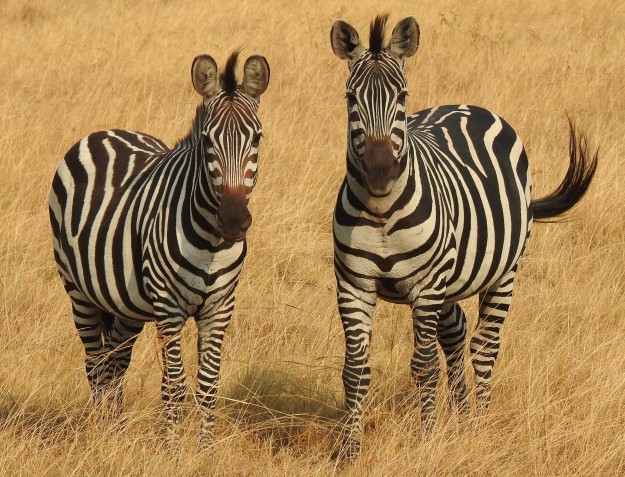
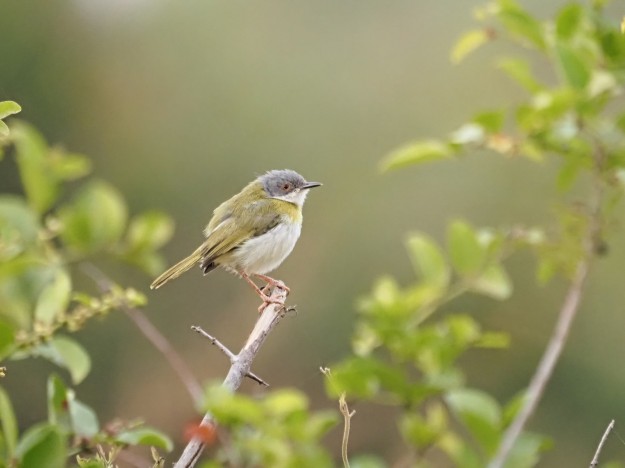
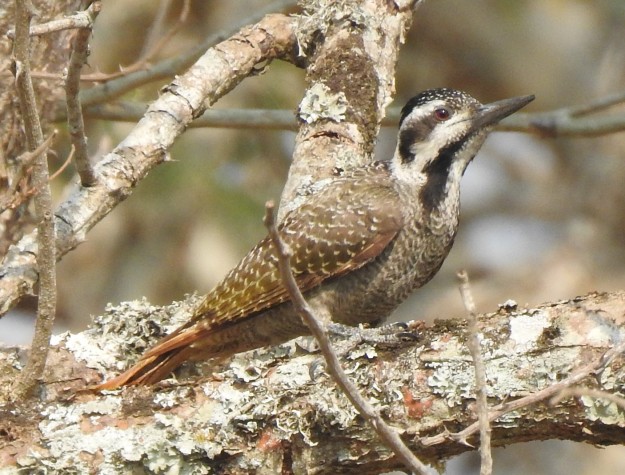
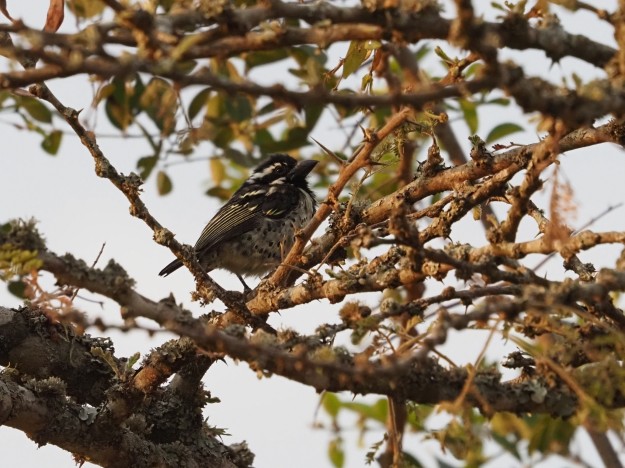


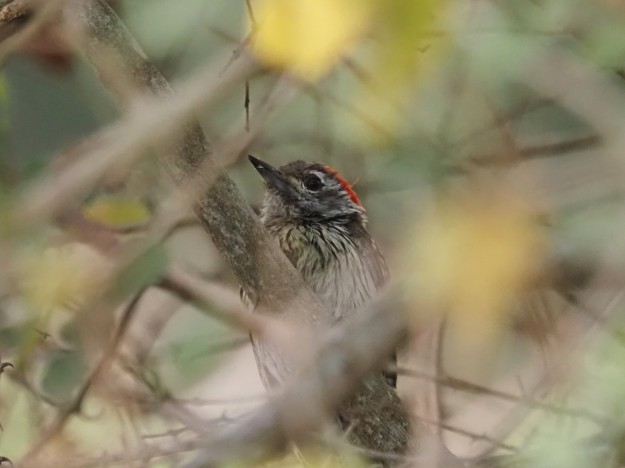
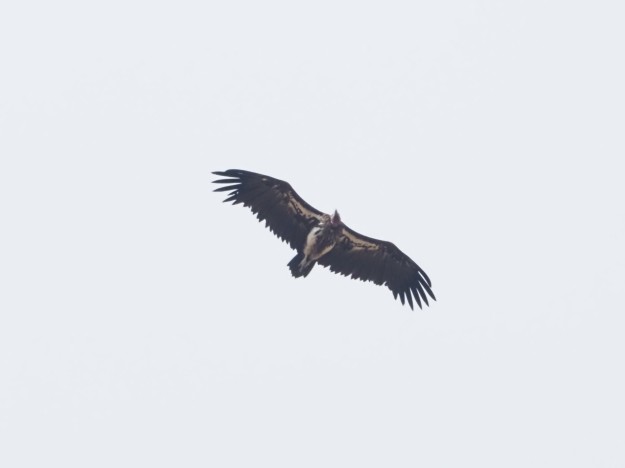
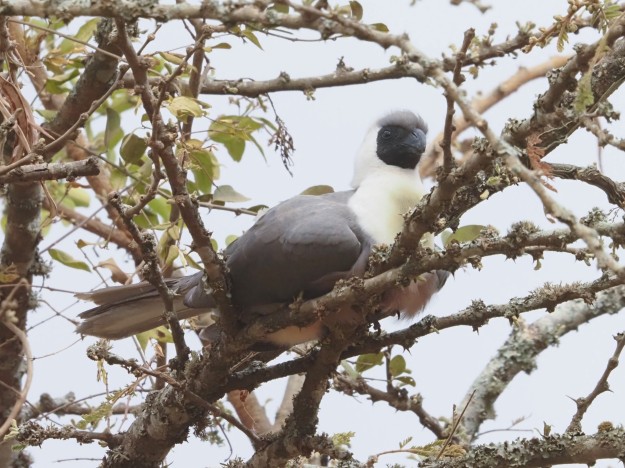
Moving North in the way to Entebbe, we had a stop in the __ Marshes, were we enjoyed the best wetland of trip. Here we enyojed large flocks of Grey-backed Cranes, Yellow-billed Storks, Yellow-billed Ducks, Long-toed Lapwings and White-faced Whistling Ducks along with 12 Hottentot Teals, several Black Egrets, and lovely views on at least 8 Rufous-bellied Herons. Other species noted in this wonderful corner included 5 Spur-winged Geese, Grassland (aka African) Pipits, White-browed Coucal, Fan-tailed Widowbird, Squacco Herons, African Swamphens and the only Three-banded Plovers of the trip.

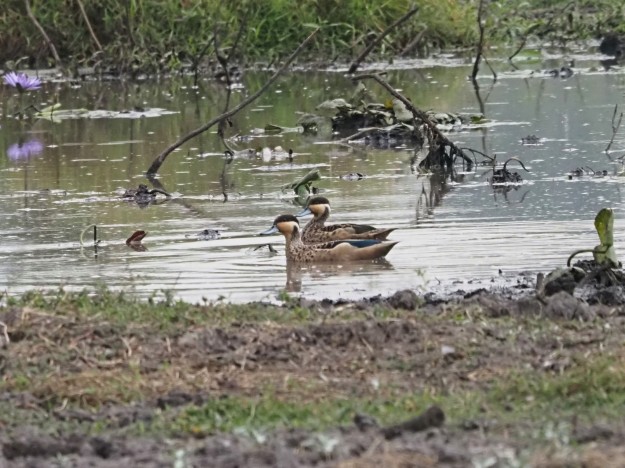
After such a great stop, we drove further North for a lunch stop by the Ecuator Line, and we were welcome back to the Northern Hemisphere by some light rains. Taking advantage of the end of the rain, we stopped in a papyrus swamp. No sign of any of the many papyrus specialists, but our efforts were regarded with another wonderful sight on a Shoebill Stork; the third of the trip! And this time the bird was moving in the moisty grassland in a disturbant slow motion while looking for food. The rain came back while enjoying this wonderful, always extremely impressive bird, so we decided to keep our way North to Entebbe.
Once in Entebbe, we still had time for a crepuscular stop around our accommodation, and once again we were lucky enough to enjoy close views on Meyer’s Parrot while the noisy Plantain-eaters were choosing its roosting place. A rather distant African Grey Parrot was a nice add to the day list, and right before sunset we got our first views on the fast flying African Hooby, busy in catching African Palm Swifts. Another crepuscular specialist, the Bat Hawk appeared as well, but left the group wanting more of it! Once it was dark, we were regarded with a wonderful close view on a Southern White-faced Scops Owl posing for us in a wire right beside our accommodation. This was the very last adding to our list, and a great way to end our first tour to Uganda!
From here only drove the short distance to our accommodation, where we had a nice dinner (and cold beer!) before taking our nocturnal flight back to Europe!
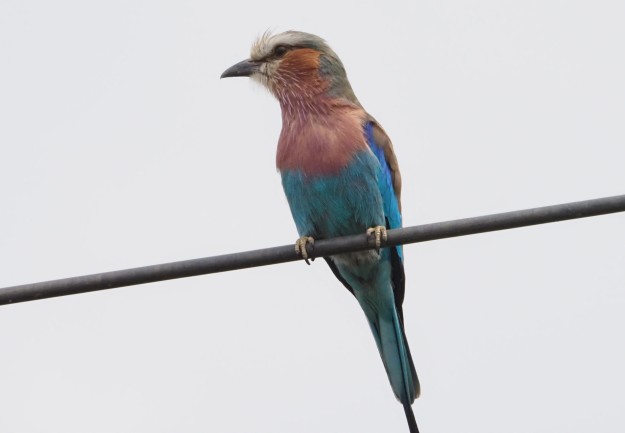
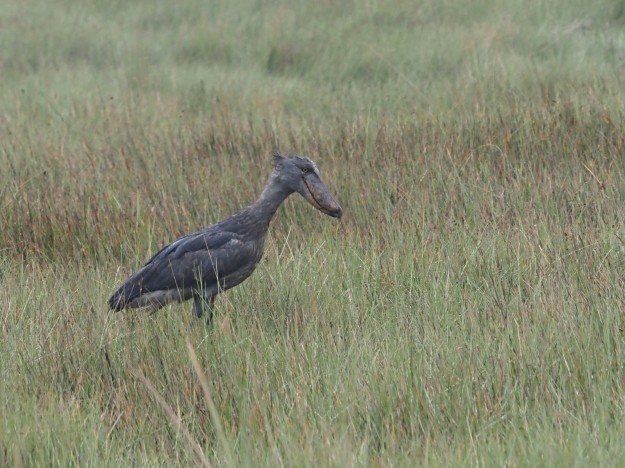
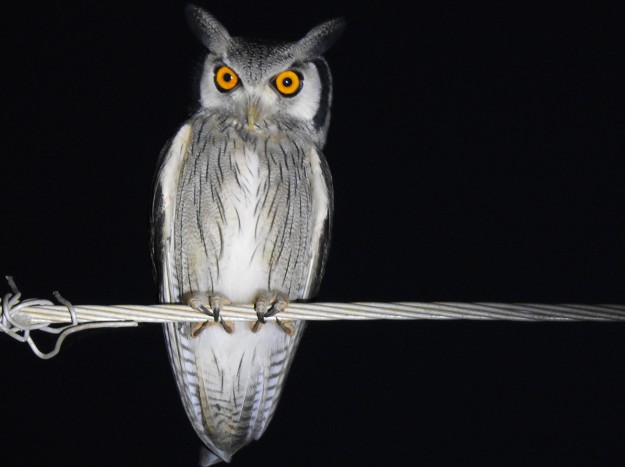

List of bird seen during the tour:
- Egyptian Goose (Alopochen aegyptiacus)
- Spur-winged Goose (Plectropterus gambensis)
- Knob-billed Duck (Sarkidiornis melanotos)
- White-faced Whistling Duck (Dendrocygna viduata)
- Hottentot Teal (Spatula hottentota)
- Yellow-billed Duck (Anas undulata)
- Helmeted Guineafowl (Numida meleagris)
- Handsome Francolin (Ptermistis nobilis)
- Heuglin’s Francolin (Ptermistis icterorhynchus)
- Red-necked Francolin (Ptermistis afer)
- Crested Francolin (Dendroperdix sephaena)
- Little Grebe (Tachybaptus ruficollis)
- Lesser Flamingo (Phoenicopterus minor)
- Yellow-billed Stork (Mycteria ibis)
- Woolly-necked Stork (Ciconia episcopus)
- African Open-billed Stork (Anastomus lamelligerus)
- Saddle-billed Stork (Ephippiorhynchus senegalensis)
- Marabou Stork (Leptoptilos crumeniferus)
- African Sacred Ibis (Threskiornis aethiopicus)
- Hadada Ibis (Bostrychia hagedash)
- Glossy Ibis (Plegadis falcinellus)
- African Spoonbill (Platalea alba)
- Black-crowned Night Heron (Nycticorax nycticorax)
- Western Cattle Egret (Bubulcus ibis)
- Squacco Heron (Ardeola ralloides)
- Rufous-bellied Heron (Ardeola rufiventris)
- Striated Heron (Butorides striatus)
- Little Egret (Egretta garzetta)
- Black Egret (Egretta ardesiaca)
- Great White Egret (Casmedorius albus)
- Intermediate Egret (Ardea intermedia)
- Goliath Heron (Ardea goliath)
- Grey Heron (Ardea cinerea)
- Purple Heron (Ardea purpurea)
- Black-headed Heron (Ardea melanocephala)
- Hamerkop (Scopus umbretta)
- Shoebill Stork (Balaeniceps rexs)
- Pink-backed Pelican (Pelecanus rufescens)
- White-breasted Pelican (Phalacrocorax lucidus)
- Long-tailed Cormorant (Phalacrocorax africanus)
- African Darter (Anhinga rufa)
- Yellow-billed Kite (Milvus aegyptius)
- Black-shouldered Kite (Elanus caeruleus)
- African Fish Eagle (Haliaeetus vocifer)
- Palm-nut Vulture (Gypohierax angolensis)
- Hooded Vulture (Neophron monachus)
- White-backed Vulture (Gyps africanus)
- Rüppell’s Vulture (Gyps ruepellii)
- Lapped-faced Vulture (Torgos tracheliotus)
- Brown Snake Eagle (Circaetus cinereus)
- Western Banded Snake Eagle (Circaetus cinarescens)
- African Marsh Harrier (Circus ranivorus)
- Dark Chanting Goshawk (Melierax metabates)
- Lizzard Buzzard (Kaupifalco monogrammicus)
- African Sparrowhawk (Accipiter tachiro)
- Great Sparrowhawk (Accipiter melanoleucos)
- African Harrier-Hawk (Polyboroides typus)
- Augur Buzzard (Buteo augur)
- Mountain Buzzard (Buteo oreophilus)
- Tawny Eagle (Aquila rapax)
- Wahlberg’s Eagle (Aquila wahlbergi)
- Bateleur (Terathopius ecaudatus)
- Long-crested Eagle (Lophaetus occipitalis)ç
- Martial Eagle (Polemaetus bellicosus)
- African Crowned Eagle (Stephanoaetus coronatus)
- Black-bellied Bustard (Eupodotis melanogaster)
- White-spotted Flufftail (Sarothura pulchra) – heard only
- African Finfoot (Podica senegalensis)
- African Crake (Crex egregia)
- Black Crake (Amaurornis flavirostris)
- African Swamphen (Porphyrio madagascariensis)
- Grey-crowned Crane (Balearica regulorum)
- Water Thick-knee (Burhinus vermiculatus)
- Senegal Thick-knee (Burhinus senegalensis)
- Black-winged Stilt (Himantopus himantopus)
- Pied Avocet (Recurvirostra avosetta)
- Spur-winged Plover (Vanellus spinosus)
- Long-toed Plover (Vanellus crassirostris)
- African Wattled Lapwing (Vanellus senegallus)
- Crowned Lapwing (Vanellus coronatus)
- Black-headed Lapwing (Vanellus tectus)
- Senegal Lapwing (Vanellus lugubris)
- Brown-chested Lapwing (Vanellus superciliosus)
- Three-banded Plover (Charadrius tricollaris)
- Greater Painted Snipe (Rostratula benglahensis)
- African Jacana (Actophilornis afrivanus)
- Common Sandpiper (Actitis hypoleucos)
- Wood Sandpiper (Tringa glareola)
- Green Sandpiper (Tringa sttagnatilus)
- Collared Pratincole (Glareola pratincola)
- Rock Pratincole (Glareola nuchalis)
- Grey-headed Gull (Chroicocephalus cirrocephalus)
- Gull-billed Tern (Chlidonias nilotica)
- White-winged Black Tern (Chlidonias hybridus)
- Whiskered Tern (Chlidonias hybridus)
- African Green Pigeon (Treron calva)
- Speckled Pigeon (Columba guinea)
- Feral Pigeon (Columba livia)
- Olive Pigeon (Columba arquatrix)
- Blue-spotted Wood-Dove (Turtur afer)
- Black-billed Wood Dove (Turtur abyssinicus)
- Tambourine Dove (Turtur tympanistria)
- Ring-necked Dover (Streptopelia capicola)
- Red-eye Dove (Streptopelia semitorquata)
- African Mourning Dove (Streptopelia decipiens)
- Vinaceous Fove (Streptopelia vinacea)
- Laughing Dove (Streptopelia senegalensis)
- Dusky Turtle Dove (Streptopelis lugens)
- Great Bllue Turaco (Corythaeola cristata)
- Ross’s Turaco (Musophaga rossae)
- White-crested Turaco (Tauraco leucolophus)
- Black-billed Turaco (Tauraco schuetti)
- Bared-faced Eastern Grey Plantain-eater (Corythaixodes personata))
- Eastern Grey Plantain-eater (Cinifer zonorus)
- Jacobin Cuckoo (Oxylophus jacobinus)
- Red-chested Cuckoo (Cuculus solitairius)
- Black Cuckoo (Cuculus clamosus)
- Dusky Long-tailed Cuckoo (Cercococcyx mechowi)
- Klaas’s Cuckoo (Chrysococcyx klaas)
- African Emerald Cuckoo (Chrysococcyx cupreus)
- Blue Malkoha (Ceuthmochares aereus)
- White-browed Coucal (Centropus superciliosus)
- Blue-headed Coucal (Centropus monachus)
- Senegal Coucal (Centropus senegalessis)
- African Wood Owl (Strix woodfordii)
- Greyish Eagle Owl (Bubo cinerascens)
- African Scops Owl (Otus senegalensis)
- Southern White-faced (Strix woodforsii)
- Rwenzori Nightjar (Caprimulgus ruwenzori)
- Pennant-winged Nightjar (Macrodipteryx vexillarius)
- Little Swift (Appus affinis)
- White-rumped Swight (Apus caffer)
- Horus Swift (Apus horus)
- African Palm Swift (Cypsiurus parvus)
- Sabine’s Spinetail (Rhaphidura sabini)
- Cassin’s Spinetail (Neafragus cassini)
- Speckled Mousebird (Colius striatus)
- Blue-naped Mousebird (Urocolius macrourus)
- Narina Trogon (Apaloderma narina)
- Broad-billed Roller (Eurystomus glaucurus)
- Blue-throated Roller (Eurystomus gularis)
- Lilac-breasted Roller (Coracias caudata)
- Pied Kingfisher (Ceryle rudis)
- Striped Kingfisher (Halcyon chelicuti)
- Grey-headed Kingfisher (Halcyon leucocephala)
- Woodland Kingfisher (Halcyon senegalensis)
- Blue-breasted Kingfisher (Halcyon malimbica)
- Chocolate-backed Kingfisher (Halcyon badia)
- Giant Kingfisher (Megaceryle maxima)
- Malachite Kingfisher (Alcedo cristata)
- African Pygmy Kingfisher (Ispidina picta)
- African Dwarf Kingfisher (Ispidina lecontei)
- Little Bee-eater (Merops pusillus)
- Cinnamon-chested Bee-eater (Merops oreobates)
- Blue-breasted Bee-eater (Merops variegatus)
- White-thoated Bee-eater (Merops albicollis)
- Swallow-tailed Bee-eater (Merops hirundineus)
- Blue-cheeked Bee-eater (Merops persicus)
- Black Bee-eater (Merops gularis)
- Madagascar Bee-eater (Merops superciliosus)
- Red-throated Bee-eater (Merops bulocki)
- Northern Carmine Bee-eater (Merops nubicus)
- African Hoopoe (Upupa africana)
- Green Wood-hoopoe (Phoeniculus purpureus)
- White-headed Wood-hoopoe (Phoeniculus bollei)
- Greater Scimitarbill (Rhinopomastus cyanomelas)
- Abyssinian Ground-hornbill (Bucorvus abyssinicus)
- African Grey Hornbill (Tockus nasutus)
- Crowned Hornbill (Tockus alboterminatus)
- African Pied Hornbill (Tockus fasciatus)
- Red-billed Dwarf Hornbill (Tockus camurus)
- Piping Hornbill (Bycanistes fistulator)
- Black-and-White Casqued Hornbill (Bycanistes subcylindricus)
- White-thighed Hornbill (Bycanistes cylindricus)
- Black-casquet Wattled Hornbill (Ceratogymna atrata)
- Yellow-rumped Tinkerbird (Pogoniulus bilineatus)
- Yellow-throated Tinkerbird (Pogoniulus subsulfureus)
- Western Green Tinkerbird (Pogoniulus coryphaeus)
- Speckled Tinkerbird (Pogoniulus scolopaceus)
- Yellow-fronted Tinkerbird (Pogoniulus chrysoconus)
- Grey-throated Tinkerbird (Gymnobucco bonapartei)
- Spot-flanked Tinkerbird (Tricholaema lacrymosa)
- Hairy-breasted Tinkerbird (Tricholaema hirsuta)
- Yellow-spotted Barbet (Buccanodon duchaillui)
- White-headed Barbet (Lybius leucocephalus)
- Black-billed Barbet (Lybius guifsofalito)
- Red-faced Barbet (Lybius rufrifacies)
- Doubled-toothed Barbet (Lybius bidentatus)
- Greater Honeyguide (Indicator indicator)
- Lesser Honeyguide (Indicator minor)
- Cassin’s Honeybird (Prodotiscus insignis)
- Fine-banded Woodpecker (Campethera thaelionaema)
- Nubian Woodpecker (Campethera nubica)
- Cardinal Woodpecker (Dendropicos fuscencens)
- Bearded Woodpecker (Dendropicos namaquus)
- Yellow-crested Woodpecker (Dendropicos xantholophus)
- Grey Woodpecker (Dendropicos goertae)
- Rock Kestrel (Falco rupicolus)
- Grey Kestrel (Falco ardosiacus)
- African Hobby (Falco cucieri)
- Red-necked Falcon (Falco chicquera)
- Peregrine Falcon (Falco peregrinus)
- Grey Parrot (Psittacus erithacus)
- Meyer’s Parrot (Poicephalus meyeri)
- Red-headed Lovebird (Agapornis pullarius)
- Chin-spot Batis (Batis molitor)
- Black-headed Batis (Batis minor)
- Rwenzori Batis (Batis diops)
- Ituri Batis (Batis iturensis)
- Brown-throated Wattle-eye (Platysteira cyanea)
- Black-throated Wattle-eye (Platysteira peltata)
- Chestnut Wattle-eye (Dyaphorophyia castanea)
- Jameson’s Wattle-eye (Dyaphorophyia jamesoni)
- Tropical Boubou (Laniarius aethiopicus)
- Lüdher’s Bush-shrike (Laniarius luehderi)
- Black-headed Gonolek (Laniarius erythrogaster)
- Papyrus Gonolek (Laniarius mufumbiri)
- Northern Puffback (Dryoscopus gambensis)
- Brubru (Nilaus afer)
- Black-crowned Tchagra (Tchagra senegallus)
- Brown-crowned Tchagra (Tchagra australis)
- Marsh Tchagra (Tchagra minuta)
- Sulphur-breasted Bush-shrike (Malaconotus sulfureopectus)
- Doherty’s Bush-shrike (Malaconotus dohertyi)
- Bocage’s Bush-shrike (Malaconotus bocagei)
- African Shrike-flycatcher (Megabias flammulatus)
- Black-and-white Shrike-flycatcher (Bias musicus)
- White-crested Helmet-shrike (Prionops plumatus)
- Black Cuckoo-shrike (Campephaga flava)
- Red-shouldered Cuckoo-shrike (Campephaga phoenicea)
- Common Fiscal (Lanius collaris)
- Grey-backed Fiscal (Lanius excubitoroides)
- Mackinnon’s Fiscal (Lanius mackinnoni)
- Montane Oriole (Oriolus percivali)
- Western Black-headed Oriole (Oriolus brachyrhynchus)
- Fork-tailed Drongo (Dricurus adsimilis)
- African Paradise Flycatcher (Tersiphone viridis)
- Red-bellied Paradise Flycatcher (Tersiphone rufiventer)
- Piapiac (Ptilostomus afer)
- Pied Crow (Corvus albus)
- White-necked Raven (Corvus albicollis)
- African Blue Flycatcher (Elminia longicauda)
- White-tailed Blue Flycatcher (Elminia albicaudata)
- Dusky Crested Flycatcher (Elminia nigromitratus)
- Dusky Tit (Parus funereus)
- White-winged (Parus leucomelas)
- White-shouldered Tit (Parus guineensis)
- Western Nicator (Nicator chloris)
- Rufous-naped Lark (Mirafra africana)
- Flappet Lark (Mirafra rufoninnamomea)
- White-tailed Lark (Mirafra albicauda)
- Common Bulbul (Pycnonotus barbatus tricolor)
- Yellow-whiskered Greenbul (Andropadus latirostris)
- Little Grey Greenbul (Andropadus ansorgei)
- Little Greenbul (Eurillas virens)
- Plain Greenbul (Eurillas curvirostris)
- Mountain Greenbul (Arizelocihla nigriceps kikuyuensis)
- Slender-billed Greenbul (Stelgidillas gracilirostris)
- Yellow-throated Greenbul (Atismastillas flavicollis)
- Joyful Greenbul (Chlorocichla laetissima)
- Honeyguide Greenbul (Baeopogon indicator)
- Yellow-streaked Greenbul (Phyllastrephus flavostriatus)
- Xavier’s Greenbul (Phyllastrephus xavieri)
- Red-tailed Bristlebill (Bleda syndactyla)
- Red-tailed Greenbul (Criniger calurus)
- White-headed Saw-wing (Psalidoprogne albiceps)
- Black Saw-wing (Psalidoprogne holomelas)
- Plain Martin (Riparia paludicola)
- Banded Martin (Riparia cincta)
- Rock Martin (Ptynoprogne fuligula)
- Barn Swallow (Hirundo rustica)
- Angolan Swallow (Hirundo angolensis)
- Wire-tailed Swallow (Hirundo smithii)
- Red-rumped Swallow (Cecropis daurica)
- Mosque Swallow (Cecropis senegalensis)
- Red-breasted Swallow (Cecropis semirufa)
- Lesser Striped Swallow (Cecropis abyssinica)
- Moustached Grass Warbler (Melocichla mentalis)
- Green Crombec (Sylvietta virens)
- Lemon-bellied Crombec (Sylvietta denti)
- Northern Crombec (Sylvietta brachyura)
- Red-faced Crombec (Sylvietta whytii)
- Black-faced Rufous Warbler (Bathmocercus rufus)
- Chestnut-capped Flycatcher (Erythrocercus mccallii)
- Green Hylia (Hylia prasina)
- Red-faced Woodland Warbler (Phylloscopus laetus)
- Lesser Swamp Warbler (Acrocephalus gracilirostris)
- Dark-capped Warbler (Iduna natalensis)
- Highland Rush Warbler (Bradypterus centralis)
- Zitting Cisticola (Cisticola juncidis)
- Wing-snapping Cisticola (Cisticola ayresii)
- Stout Cisticola (Cisticola robustus)
- Croacking Cisticola (Cisticola natalensis)
- Rattling Cisticola (Cisticola chiniana)
- Rufous-winged Cisticola (Cisticola galactotes)
- Red-faced Cisticola (Cisticola erythrops)
- Chubb’s Cisticola (Cisticola chubbi)
- Trilling Cisticola (Cisticola woosnami)
- Foxy Cisticola (Cisticola troglodytes)
- Short-winged Cisticola (Cisticola brachypterus)
- Tawny-flanked Prinia (Prinia subflava)
- White-chinned Prinia (Prinia leucopogon)
- Black-faced Prinia (Prinia melanops)
- Banded Prinia (Prinia bairdii)
- Yellow-breasted Apalis (Apalis flacida)
- Chestnut-throated Apalis (Apalis porphyrolaema)
- Buff-throated Apalis (Apalis rufogularis)
- Black-throated Apalis (Apalis jacksoni)
- Lowland Masked Apalis (Apalis bonitata)
- Mountain Masked Apalis (Apalis personata)
- Rwenzori Apalis (Oreolais ruwenzorii)
- Buff-bellied Warbler (Phyllolais pulchella)
- Red-winged Grey Warbler (Drymocichla incana)
- Grey-backed Camaroptera (Camaroptera brevicaudata)
- Green-backed Eremomela (Eremomela canescens)
- Rufous-crowned Eremomela (Eremomela badiceps)
- Rwenzori Hill Babbler (Sylvia atriceps)
- Green White-eye (Zosterops stuhlmanni)
- Mountain Illadopsis (Illadopsis pyrrhoptera)
- Arrow-marked Babbler (Turdoides jardineii)
- Brown Babbler (Turdoides plebejus)
- Black-lored Babbler (Turdoides sharpei)
- Wattled Starling (Creatophora cinerea)
- Purple-headed Starling (Hylopsar purpureiceps)
- Greater Blue-eared Starling (Lamprotornis chalybaeus)
- Lesser Blue-eared Starling (Lamprotornis chloropterus)
- Rüppell’s Long-tailed Starling (Lamprotornis purpuropterus)
- Splendid Starling (Lamprotornis splendidus)
- Violet-backed Starling (Cinnyricincus leucogaster)
- Chestnut-winged Starling (Onychognatus fulgidus)
- Slender-billed Starling (Onychognatus tenuirostris)
- Sharpe’s Starling (Peoptera sharpii)
- Stuhmann’s Starling (Peoptera stuhlmanni)
- Yellow-billed Oxpecker (Buphagus africanus)
- Red-tailed Ant Thrush (Neocossyphus rufus)
- Fraser’s Rufous Thrush (Stizorhina fraseri)
- African Thrush (Turdus pelios)
- Fire-crested Alethe (Alethe diademata)
- Brown-backed Scrub Robin (Cercotrichas hartlaubi)
- White-browed Scrub Robin (Cercotrichas leucophrys)
- Lead-coloured Flycatcher (Myioparus plumbeus)
- White-eyed Slaty Flycatcher (Melaenornis fischeri)
- Northern Black Flycatcher (Melaenornis edolioides)
- Yellow-eyed Black Flycatcher (Melaenornis ardesiacus)
- Pale Flycatcher (Melaenornis pallidus)
- Silverbird (Empidornis semipartitus)
- Ashy Flycatcher (Muscicapa caerulescens)
- Swamp Flycatcher (Muscicapa aquatica)
- Cassin’s Flycatcher (Muscicapa cassini)
- Yellow-footed Flycatcher (Muscicapa sethsmithi)
- African Dusky Flycatcher (Muscicapa adusta)
- Dusky-blue Flycatcher (Muscicapa comitata)
- Sooty Flycatcher (Muscicapa infuscata)
- Forest Flycatcher (Fraseria ocreata)
- Cape Robin-Chat (Cossypha afra)
- White-browed Robin-Chat (Cossypha heuglini)
- Archer’s Robin-Chat (Cossypha archeri)
- Forest Robin (Stiphornis erythrotorax)
- Spotted Palm-Thrush (Cichladusa gutatta)
- African Stonechat (Saxicola torquata)
- Moking Cliff Chat (Thamnolaea cinnamomeiventris)
- Sooty Chat (Myrmecocichla nigra)
- Grey-headed Sunbird (Deleornis axiliaris)
- Little Green Sunbird (Anthrepes seimundi)
- Collared Sunbird (Hedydipna collaris)
- Green-headed Sunbird (Cyanomitra verticalis)
- Blue-throated Brown Sunbird (Cyanomitra cyanolaema)
- Blue-headed Sunbird (Cyanomitra aliane)
- Olive Sunbird (Cyanomitra olivacea)
- Green-throated Sunbird (Chalcomitra rubescens)
- Scarlet-chested Sunbird (Chalcomitra senegalensis)
- Bronze Sunbird (Nectarinia kilimensis)
- Purple-breasted Sunbird (Nectarinia purpureiventris)
- Northern Double-collared Sunbird (Cinnyris preusi)
- Olive-bellied Sunbird (Cinnyris chloropygia)
- Tiny Sunbird (Cinnyris minulla)
- Regal Sunbird (Cinnyris regia)
- Copper Sunbird (Cinnyris cuprea)
- Variable Sunbird (Cinnyris venusta)
- Mariqua Sunbird (Cinnyris mariquensis)
- Beautiful Sunbird (Cinnyris pulchella)
- Red-chested Sunbird (Cinnyris erythrocerca)
- House Sparrow (Passer domesticus)
- Grey-headed Sparrow (Passer griseus)
- Chestnut-crowned Sparrow-Weaver (Plocepasser superciliosus)
- Speckle-fronted Weaver (Sporopipes frontalis)
- Thick-billed Weaver (Amblyospiza albifrons)
- Village Weaver (Ploceus cucullatus)
- Lesser Masked Weaver (Ploceus intermedius)
- Vitelline Masked Weaver (Ploceus velatus)
- Spectacled Weaver (Ploceus ocularis)
- Black-necked Weaver (Ploceus nigricollis)
- Baglafecht Weaver (Ploceus baglafecht)
- Little Weaver (Ploceus luteolus)
- Slender-billed Weaver (Ploceus pelzelni)
- Golden-backed Weaver (Ploceus jacksoni)
- Yellow-backed Weaver (Ploceus melanocephalus)
- Northern Brown-throated Weaver (Ploceus castanops)
- Compact Weaver (Ploceus superciliosus)
- Holub’s Golden Weaver (Ploceus xanthops)
- Brown-capped Weaver (Ploceus insignis)
- Black-billed Weaver (Ploceus melanogaster)
- Vieillot’s Black Weaver (Ploceus nigerrimus)
- Crested Malimbe (Malimbus malimbicus)
- Red-headed Weaver (Anaplectes rubriceps)
- Red-billed Quelea (Quelea quelea)
- Fan-tailed Widowbird (Euplectes axilaris)
- Marsh Widowbird (Euplectes hartlaubi)
- Black Bishop (Euplectes gierowii)
- Yellow-mantled Widowbird (Euplectes macrourus)
- Southern Red Bishop (Euplectes orix)
- Northern Red Bishop (Euplectes franciscanus)
- Black-winged Red Bishop (Euplectes hordeaceus)
- Bronze Mannikin (Spermestes cucullata)
- Black-and-White Mannikin (Spermestes bicolor)
- Yellow-bellied Waxbill (Coccopygia quartinia)
- Green Twinspot (Mandingoa nitidula)
- Dusky Crimsonwing (Cryptospiza jacksoni)
- Grey-headed Nigrita (Nigrita canicapilla)
- White-breasted Nigrita (Nigrita fusconota)
- Black-crowned Waxbill (Estrilda nonnula)
- Fawn-breasted Waxbill (Estrilda paludicola)
- Common Waxbill (Estrilda astrild)
- Black-rumped Waxbill (Estrilda troglodytes)
- Orange-cheeked Waxbill (Estrilda melpoda)
- Crimson-rumped Waxbill (Estrilda rhogopyga)
- Orange-breasted Waxbill (Amandava subflava)
- Red-cheeked Cordon-bleu (Uraeginthus bengalus)
- Black-bellied Seedcracker (Pyrenestes ostrinus)
- Green-winged Pytilia (Pytilia melba)
- Red-winged Pytilia (Pytilia phoenicoptera)
- Dusky Twinspot (Euschistospiza cinereovinacea)
- Brown Twinspot (Clytospiza monteirei)
- Red-billed Firefinch (Lagonosticta senegala)
- African Firefinch (Lagonosticta rubricata)
- Bar-breasted Firefinch (Lagonosticta rufopicta)
- Village Indigobird (Vidua chalybeata)
- Pin-tailed Whydah (Vidua macroura)
- African Pied Wagtail (Motacilla aguimp)
- Cape Wagtail (Motacilla capensis)
- Yellow-throated Longclaw (Macronyx croceus)
- African Pipit (Anthus cinnamomeus)
- Plain-backed Pipit (Anthus leucophrys)
- Short-tailed Pipit (Anthus brachyurus)
- Brimstone Canary (Crithagra sulphuratus)
- Yellow-fronted Canary (Crithagra mozambicus)
- Thick-billed Seedeater (Crithagra burtoni)
- African Citril (Crithagra citrinelloides)
- Western Citril (Crithagra frontalis)
- Papyrus Canary (Crithagra koniensis)
- Streaky Canary Seeadeater (Crithagra striolatus)
- Cinnamon-breasted Bunting (Emberiza tahapisi)
- Golden-breasted Bunting (Emberiza flaviventris)
- Cabani’s Bunting (Emberiza cabanisi)
List of species of mammals appeared in the tour:
- African Bush Elephant (Loxodonta africana)
- Stripped Ground Squirrel (Euxerus erythropus)
- Isabelline Sun Squirrel (Heliosciurus rufobrachium)
- Alexander Bush Squirrel (Paraxeus alexandri)
- Boehm’s Bush Squirrel (Paraxeus boehmi)
- Olive Baboon (Papio anubis)
- Patas Monkey (Erythrocebus patas)
- Vervet Monkey (Chlorocebus pygerythrus)
- L’Hoest’s Monkey (Allochrocebus lhoesti)
- Red-tailed Monkey (Cercopithecus ascanius)
- Blue Monkey (Cercopithecus mitis)
- Red Colobus (Cercopithecus badius)
- Uganda Mangabey (Lophocebus ugandae)
- Black and White Colobus (Colobus guereza)
- Eastern Gorilla (Gorilla beringei)
- Chimpanzee (Pan troglodytes)
- African Straw-coloured Fruit-Bat (Eidolon helvum)
- Yellow-winged Bat (Lavia frons)
- Lion (Panthera leo)
- Leopard (Panthera pardus)
- Spotted Hyaena (Crocuta crocuta)
- Side-striped Jackal (Lupulella adusta)
- Slender Mongoose (Herpestes sanguinea)
- Common Dwarf Mongoose (Helogale parvula)
- Plains Zebra (Equus quagga)
- White Rhinocero (Ceratotherium simum)
- Common Warthog (Phacochoerus africanus)
- Forest Hog (Hylochoerus meinertzahageni)
- Hyppopotamus (Hippotamus amphibius)
- African Buffalo (Synverus caffer)
- Bushbuck (Tragelaphus scriptus)
- Impala (Aepycerus melampus)
- Oribi (Ourebia ourebi)
- Waterbuck (Kobus ellipsiprymnus)
- Uganda Kob (Kobus kob)
- Hartebeest (Alcephalus busephalus)
- Topi (Damaliscus lutanus)
- Common Duiker (Sylvicapra grimmia)
- Rwenzori Duiker (Cephalophus rubidus)
- Giraffe (Giraffa camelopardalis)
